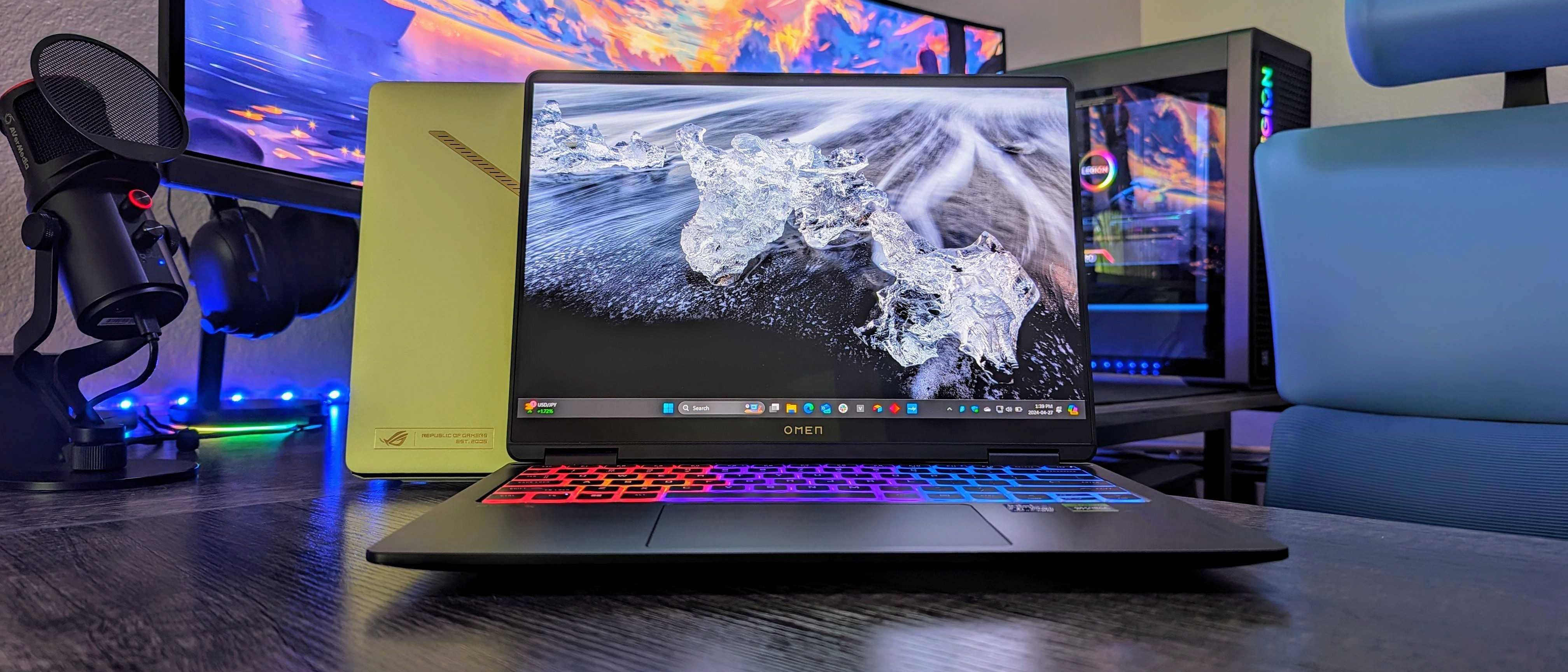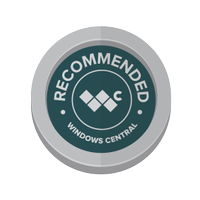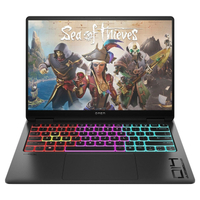Windows Central Verdict
HP's debut premium 14-inch gaming laptop is beautiful and slim with an incredible display and standout keyboard, but its lackluster performance and slightly higher pricing makes it a tough recommendation over its biggest direct competitor.
Pros
- +
Sleek and attractive design with solid build quality
- +
Beautiful and responsive OLED display
- +
Good productivity performance
- +
Comfortable keyboard and touchpad
Cons
- -
Gaming performance is sorely lacking at this price point
- -
Inconsistent battery life
- -
Lots of software bloat
Why you can trust Windows Central
Reviewing the HP OMEN Transcend 14 almost feels like repeating history, in a sense. By that, I mean this laptop seems like an excellent option on paper... Until you compare it to its closest competitor from ASUS. HP's debut premium 14-inch gaming laptop is slim and beautiful, but it's simply lacking in a major area of importance for gaming devices: performance.
A low wattage GPU, inconsistent battery life, and other minor oddities combine headfirst with a price tag greater than the equivalent configuration from ASUS' competitor. That's not to say the OMEN Transcend 14 is actually bad; the display is gorgeous, the design is wonderful, and the keyboard is responsive and comfortable (despite its divisive RGB lighting setup).
Unfortunately, it seems the OMEN Transcend 14 may fall victim to picking a fight it just can't win, obscuring all the genuinely amazing things about it. At a lower price, though, it'd be a lot easier to recommend over its rival.
Disclaimer
This review was made possible with a review sample provided by HP. The company did not see the contents of the review before publishing.
OMEN Transcend 14: Pricing and specifications
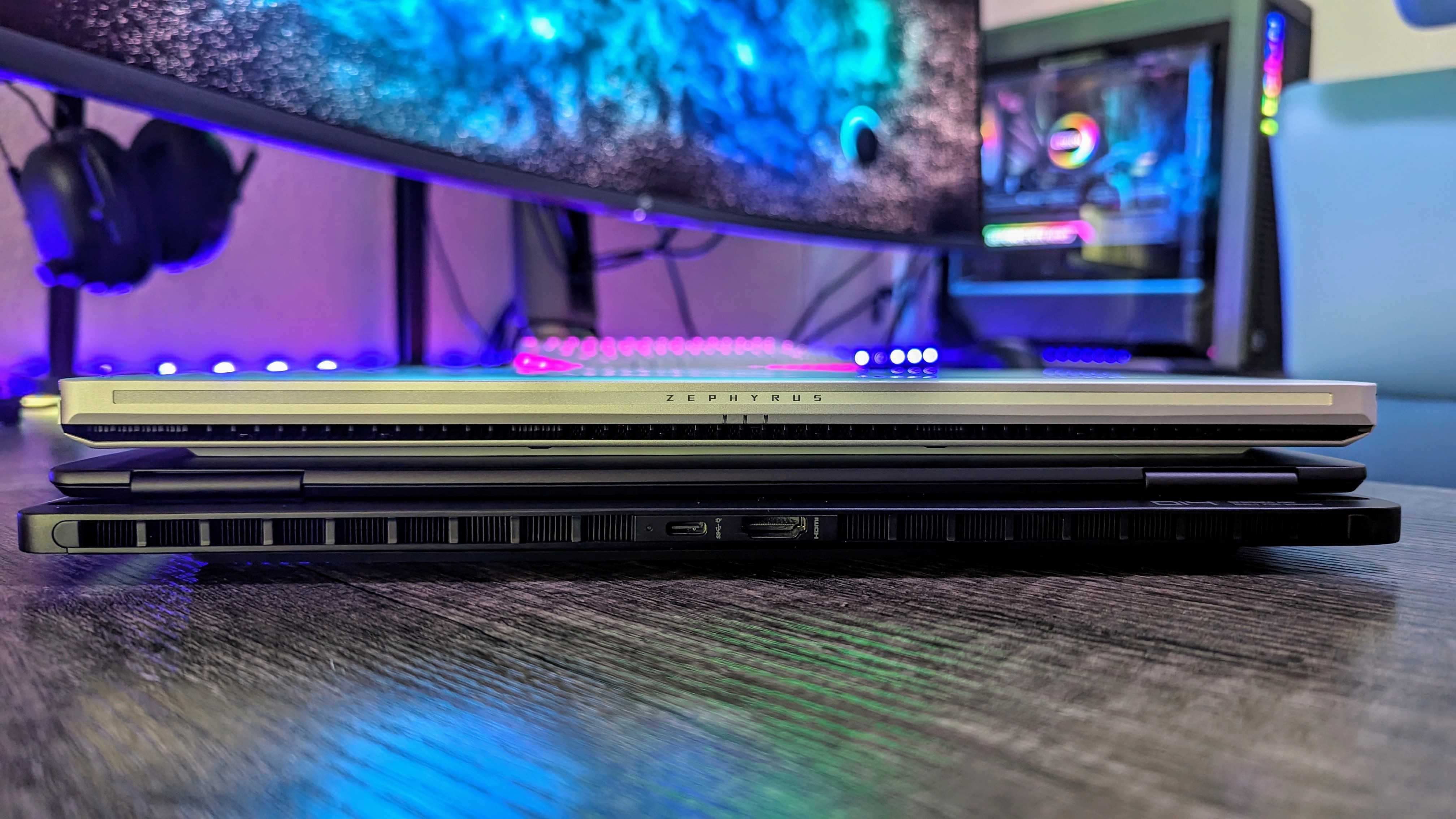
Pricing highlights
- The HP OMEN Transcend 14 starts at $1,599.99 with a Core Ultra 7, 16GB of RAM, 512GB of SSD storage, and an RTX 4050.
- You can configure the OMEN Transcend 14 up to over $2,600 when maxed out, but its upper-level preset model runs for $1,999.99 with a Core Ultra 9, 32GB of RAM, 1TB of SSD storage, and an RTX 4070.
- The entry models are more expensive than the comparable ASUS ROG Zephyrus G14 configurations, but upgrades are also reasonably priced.
- Value rating: ⭐⭐⭐½
• Price: $1,699.99 at Best Buy
• Display: 14-inch OLED, 16:10 aspect ratio, 2.8K (2,880 x 1,800), 48-120Hz refresh rate, 0.2ms response time, up to 500nits (HDR), 100% DCI-P3 color gamut
• CPU: Intel Core Ultra 7 155H (up to 4.8GHz, 16 cores, 22 threads)
• GPU: NVIDIA GeForce RTX 4060 (8GB GDDR6 VRAM)
• RAM: 16GB LPDDR5X @ 7,467MHz
• Storage: 1TB M.2 NVMe PCIe Gen 4.0 SSD
• Battery: 71WHr w/ 140W USB Type-C fast charging
• Dimensions: 313 x 233.4 x 17-18mm (12.32 x 9.19 x 0.67-0.71in)
• Weight: 1.63kg (3.6lbs)
The HP OMEN Transcend 14 starts from $1,599.99 at HP, cementing its place among premium Windows laptops. That entry-level model isn't particularly impressive with an Intel Core Ultra 7 155H CPU, NVIDIA GeForce RTX 4050 GPU, 16GB of soldered RAM, and 512GB of SSD storage. For me, the real entry-level configuration is $100 more for $1,699.99 at Best Buy and upgrades you to an RTX 4060 and 1TB of SSD storage, a very reasonable upcharge in stark comparison to the exorbitant upgrades you'll find elsewhere.
That's the configuration I reviewed, and it's nearly identical to the configuration of the ASUS ROG Zephyrus G14 (2024) I reviewed. Yes, expect me to mention the Zephyrus G14 a lot throughout this review, as that laptop is the biggest obstacle between the OMEN Transcend 14 and success. Reason #1? The Zephyrus G14 with an AMD Ryzen 8945HS (a competitor for the Core Ultra 9), an RTX 4060, 16GB of RAM, and a 1TB SSD retails for $1,599.99 at Best Buy — $100 less than HP's alternative, while also boasting a more powerful CPU and a higher wattage GPU.
At the higher end, HP and ASUS more-or-less match each other in price, capping out at $1,999.99 at Best Buy for the OMEN Transcend 14 with a Core Ultra 9, an RTX 4070, 32GB of RAM, and 1TB of SSD storage. The equivalent Zephyrus G14 retails for $1,999.99 at Best Buy, too. Of course, you can also configure your own HP OMEN Transcend 14 at HP for more granular control.
In the box, you get the HP OMEN Transcend 14 gaming laptop and a 140W USB Type-C fast charger. I can't comment on packaging in this case, since HP sent me a special review sample that also included a HyperX Cloud III Wireless gaming headset.
HP OMEN Transcend 14 | Core Ultra 7 155H | RTX 4060 | 16GB RAM | 1TB SSD — $1,699.99 at Best Buy
My recommended OMEN Transcend 14 is the same configuration I reviewed, as it's well-balanced and an easy jump up from the base model. It's $100 more expensive at retail than ASUS' more capable Zephyrus G14, but this laptop could still be an awesome purchase when on sale. You can also always configure your own.
Also see: Configure your HP OMEN Transcend 14 from $1,599.99 at HP
OMEN Transcend 14: Design and build quality
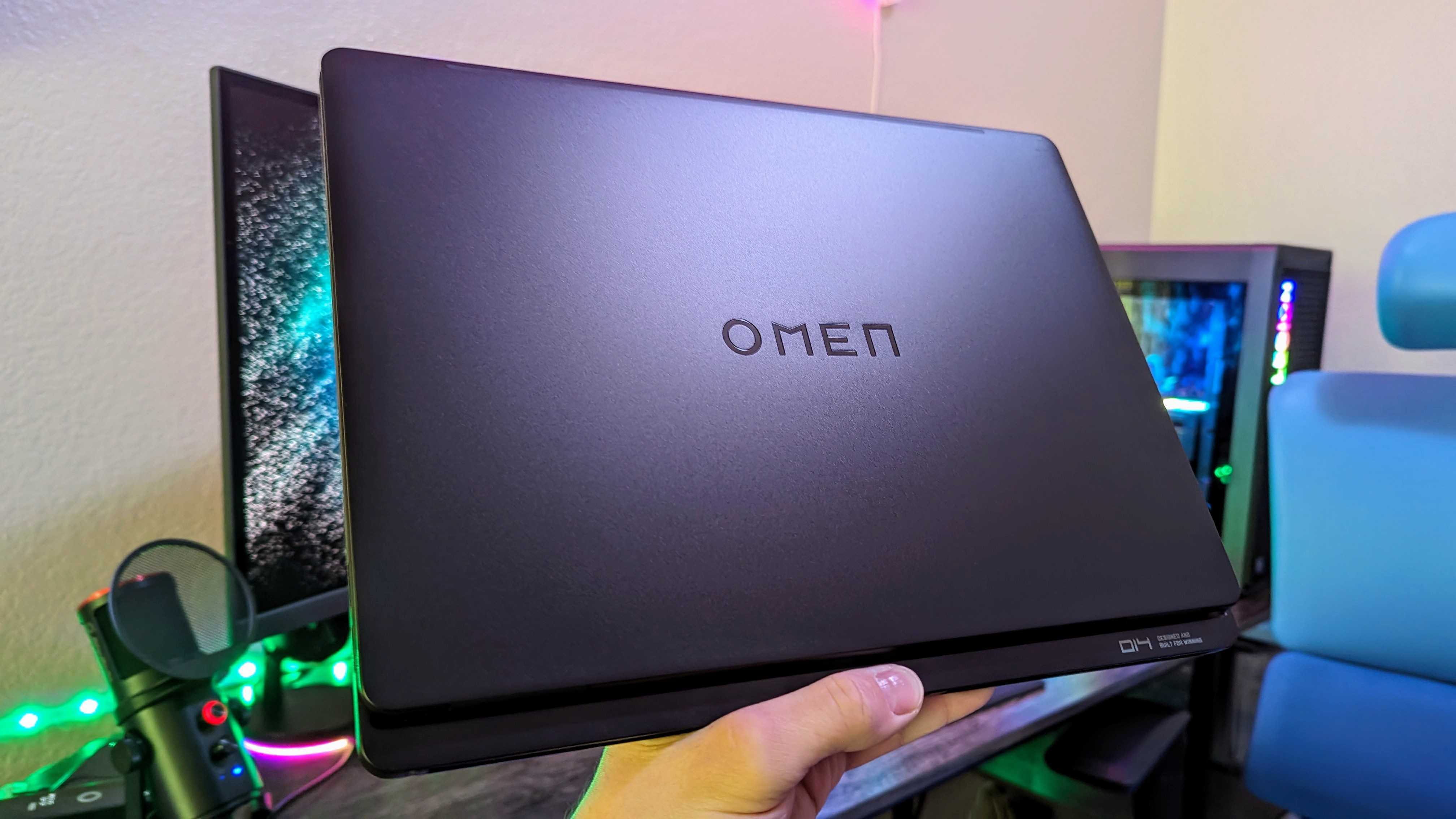
Design highlights
- The HP OMEN Transcend 14 is the hands-down the most attractive laptop in HP's OMEN lineup.
- It's slim, well-built, and understated without losing the "gaming laptop" aesthetic.
- However, the Zephyrus G14 from ASUS is smaller in every dimension, lighter, and feels more premium overall.
- Design rating: ⭐⭐⭐⭐
• Materials: High-strength aluminum (50% recycled), Corning Gorilla Glass, plastic (45% recycled & 5% ocean-bound in bezels/speaker enclosure, 50% post-consumer recycled in keyboard)
• Design features: Ceramic white & black colorways, unique RGB backlit keyboard, protruding rear shelf
• Ports: 1x USB Type-C Thunderbolt 4 w/ DisplayPort 2.1 & Power Delivery, 1x USB Type-C 3.2 Gen 2 w/ DisplayPort 1.4 & Power Delivery, 1x USB Type-A 3.2 Gen 2 w/ always-on power, 1x USB Type-A 3.2 Gen 2, 1x HDMI 2.1, 1x 3.5mm audio
• Dimensions: 313 x 233.4 x 17-18mm (12.32 x 9.19 x 0.67-0.71in)
• Weight: 1.63kg (3.6lbs)
HP knows how to make a beautiful laptop — I said as much in my HP Spectre x360 14 (2024) review. Among the OMEN gaming laptops, however, the Transcend 14 stands supreme. It's slim and compact, constructed of matte black (or white) aluminum and glass, and looks every bit the premium laptop it's supposed to be. It's an awesome design overall that looks sharp and sloped compared to the boxy design of the Zephyrus G14.
Ports-wise, HP adopts the shelf design we've seen in other laptops (like Lenovo's Legion line), which houses the rear-facing 140W Thunderbolt 4 port and an HDMI 2.1 port. On the right side are two USB Type-A ports (one of which can be always on for charging), and on the left side is a USB Type-C port and a 3.5mm audio jack. Although strangely, these two ports are situated in the center of the chassis, rather than near the rear. Small oddity.
Open it up via the smooth dual-hinge, and you'll be met with the wonderful OLED display flanked on three sides by thin bezels, and the immediately odd RGB backlit keyboard. This unique "transparent edge" key design has no bearing on the actual usability of the keyboard, but it'll undoubtedly be divisive aesthetics-wise. After using the OMEN Transcend 14, I think it's… fine. Weird design or not, these RGB lights aren't the most vibrant or smoothest I've seen.
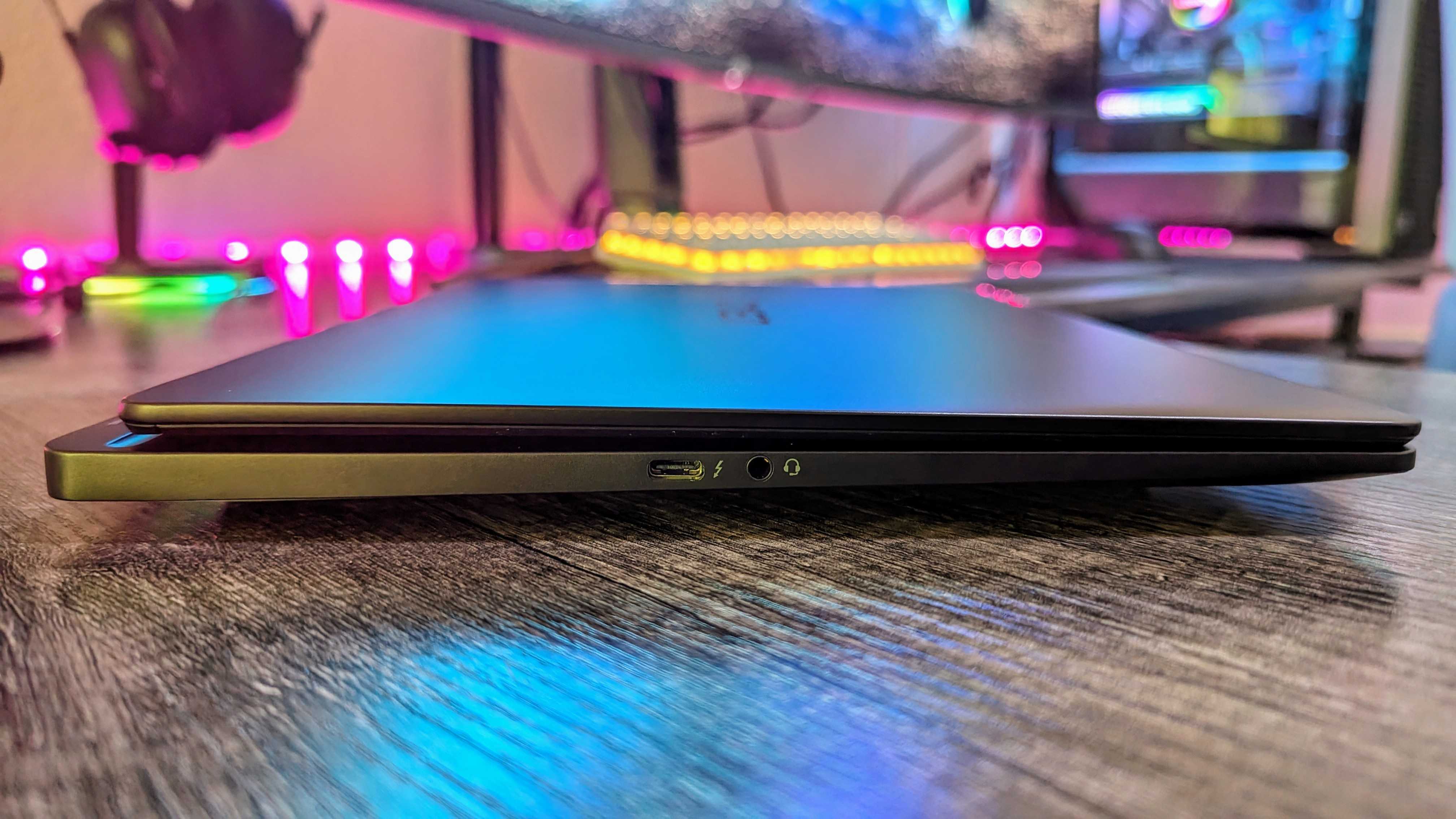
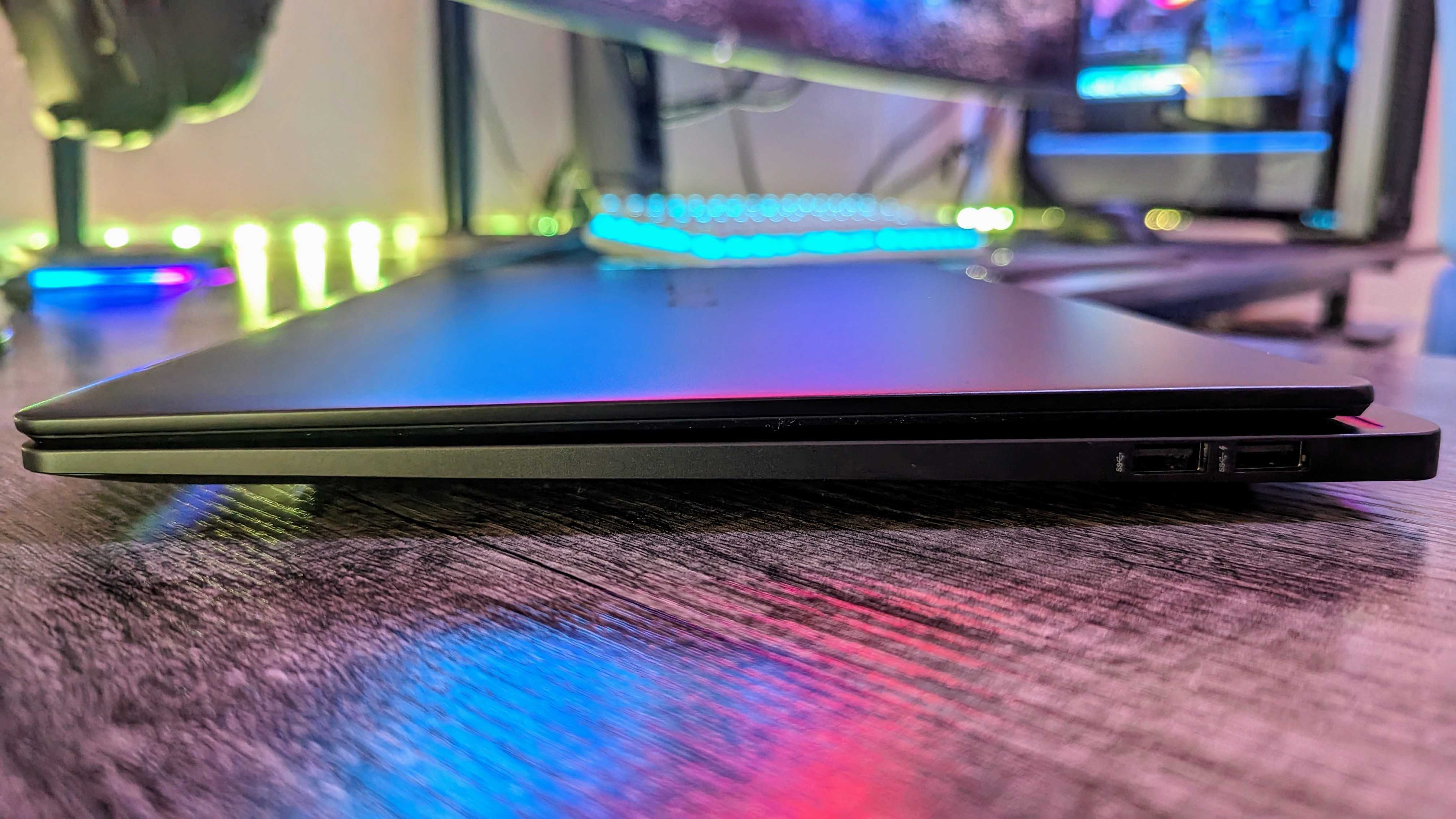
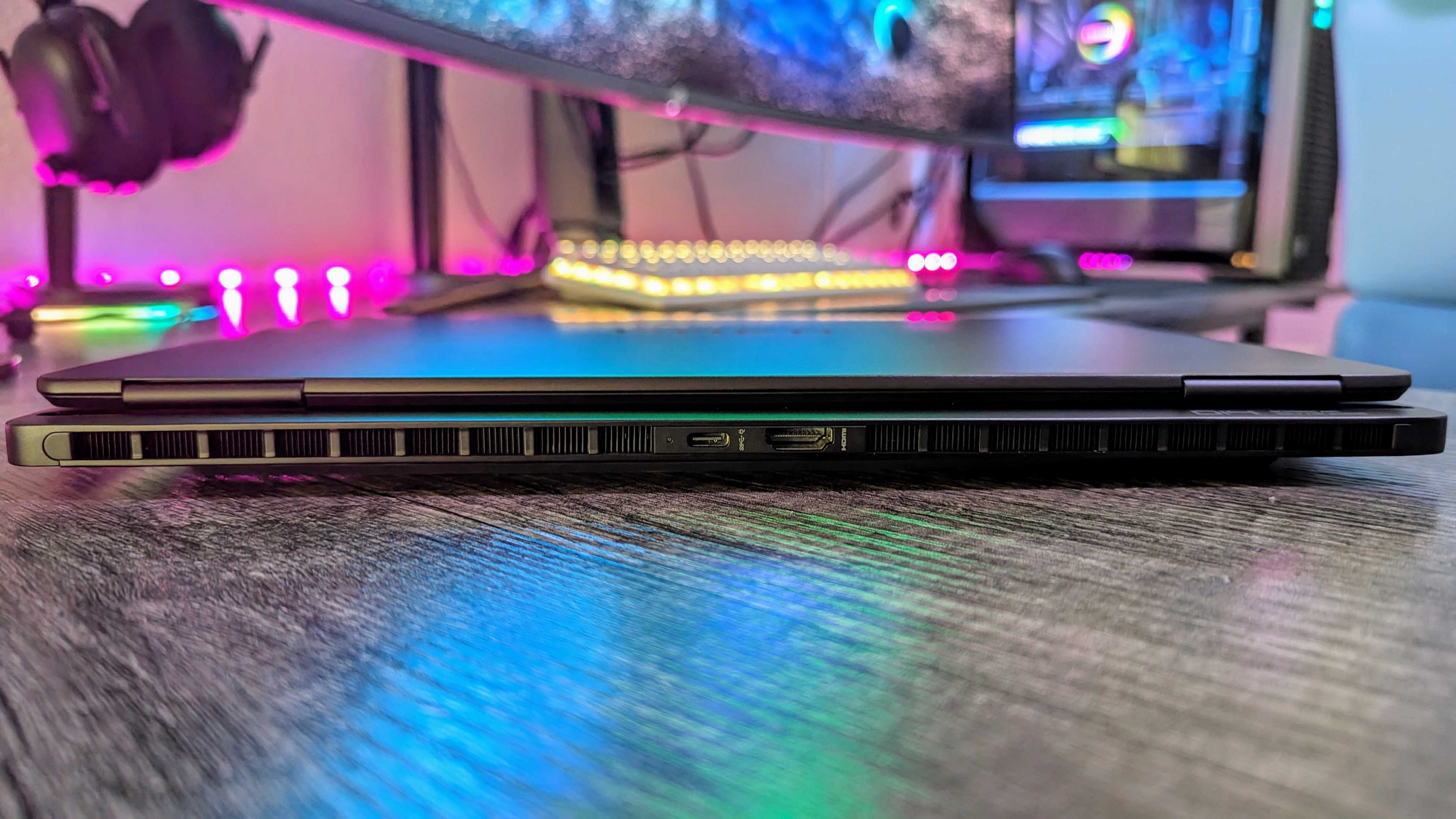
Great use of materials and high build quality, slim and attractive design, solid port selection — What's not to love? Well, once again, the ASUS ROG Zephyrus G14 (2024) is the OMEN Transcend 14's biggest competitor. Actually, it's smaller in this case; the Zephyrus G14 is more compact in every dimension than the Transcend 14 on top of being lighter. It doesn't lose anything to achieve this, either, as you actually gain a microSD card slot without losing any other ports.
I prefer the design and construction of the Zephyrus G14, too. It feels considerably more refined and solid, as the OMEN Transcend 14 has noticeable flexing in its keyboard deck, lid, and bottom cover where you'll struggle to find such weaknesses in ASUS' premium gaming laptop.
OMEN Transcend 14: Display quality
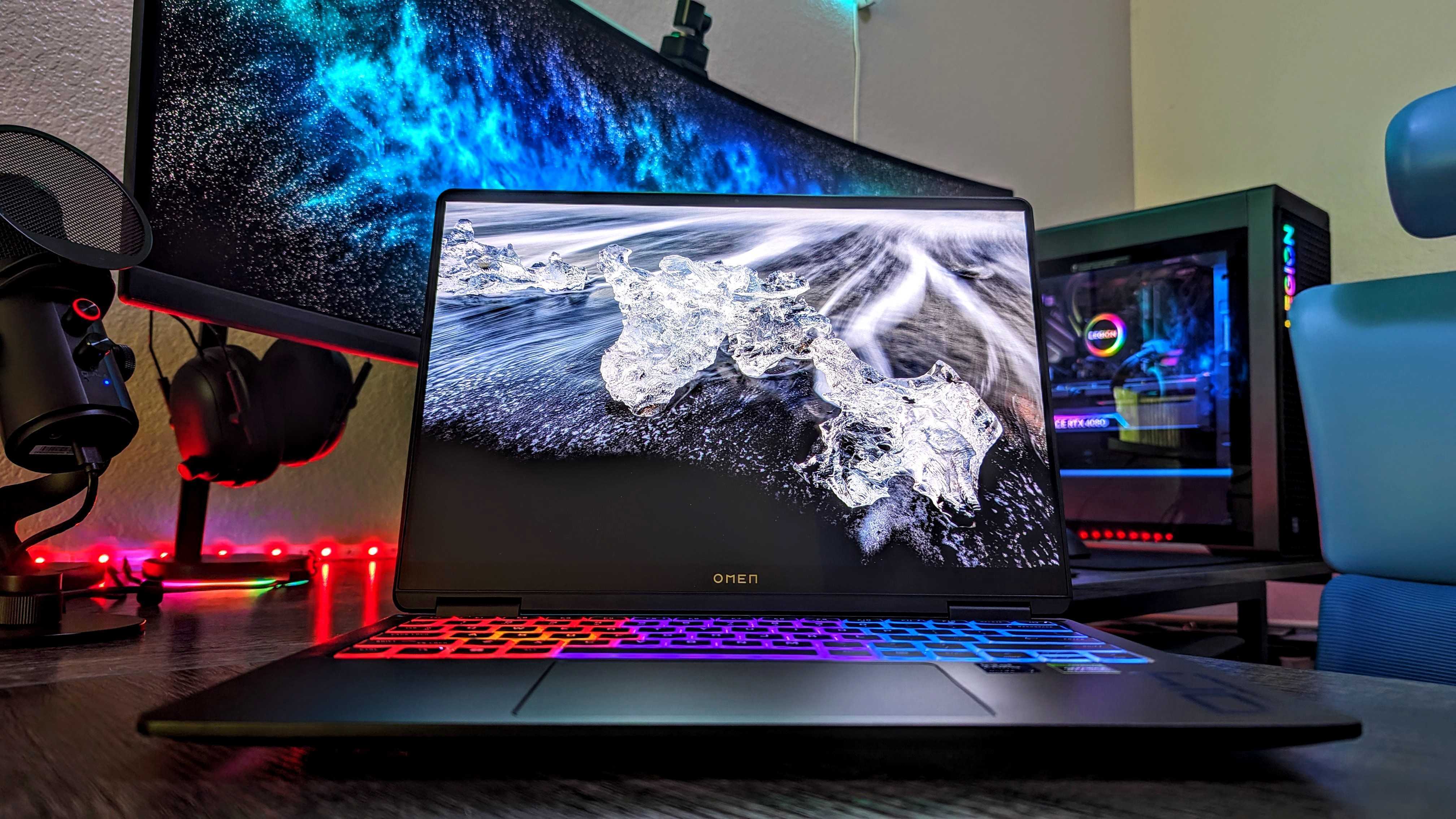
Display highlights
- The OMEN Transcend 14 is another laptop using the 14-inch, 2.8K OLED panel we know and love, but it's not quite the best example we've seen.
- On paper its specs are amazing, but in person the Zephyrus G14's display feels a little smoother and more responsive, and looks a little more vibrant and color accurate — plus you gain NVIDIA G-Sync support.
- Still, the OMEN Transcend 14's display looks and feels great for productivity, creative work, gaming, and media consumption.
- Display rating: ⭐⭐⭐⭐½
• Display type: 14-inch, 16:10 aspect ratio, OLED, non-touch
• Display specs: 2.8K (2880 x 1800) resolution, 48-120Hz refresh rate, 0.2ms response time, 500nits mx brightness w/ HDR, 100% DCI-P3 color gamut
• Display features: IMAX Enhanced certified
Here we are again. This 14-inch, 2.8K OLED Samsung panel is rapidly becoming unavoidable in the Windows laptop market, and I have no qualms about that. It's a brilliant display that's practically perfect for most people, and it predictably looks just as good here. That being said, it's not the absolute best version of this panel I've seen in every category.
First, let's get the basics out of the way. The display on the HP OMEN Transcend 14 is positively gorgeous. It gets bright enough for use in well-lit environments, the colors are vibrant and accurate, and it feels buttery smooth and responsive. HP doesn't specify the HDR standard to which this panel adheres, but it is IMAX Enhanced certified like the HP Spectre x360 14 and adopts HP's low blue light tech.
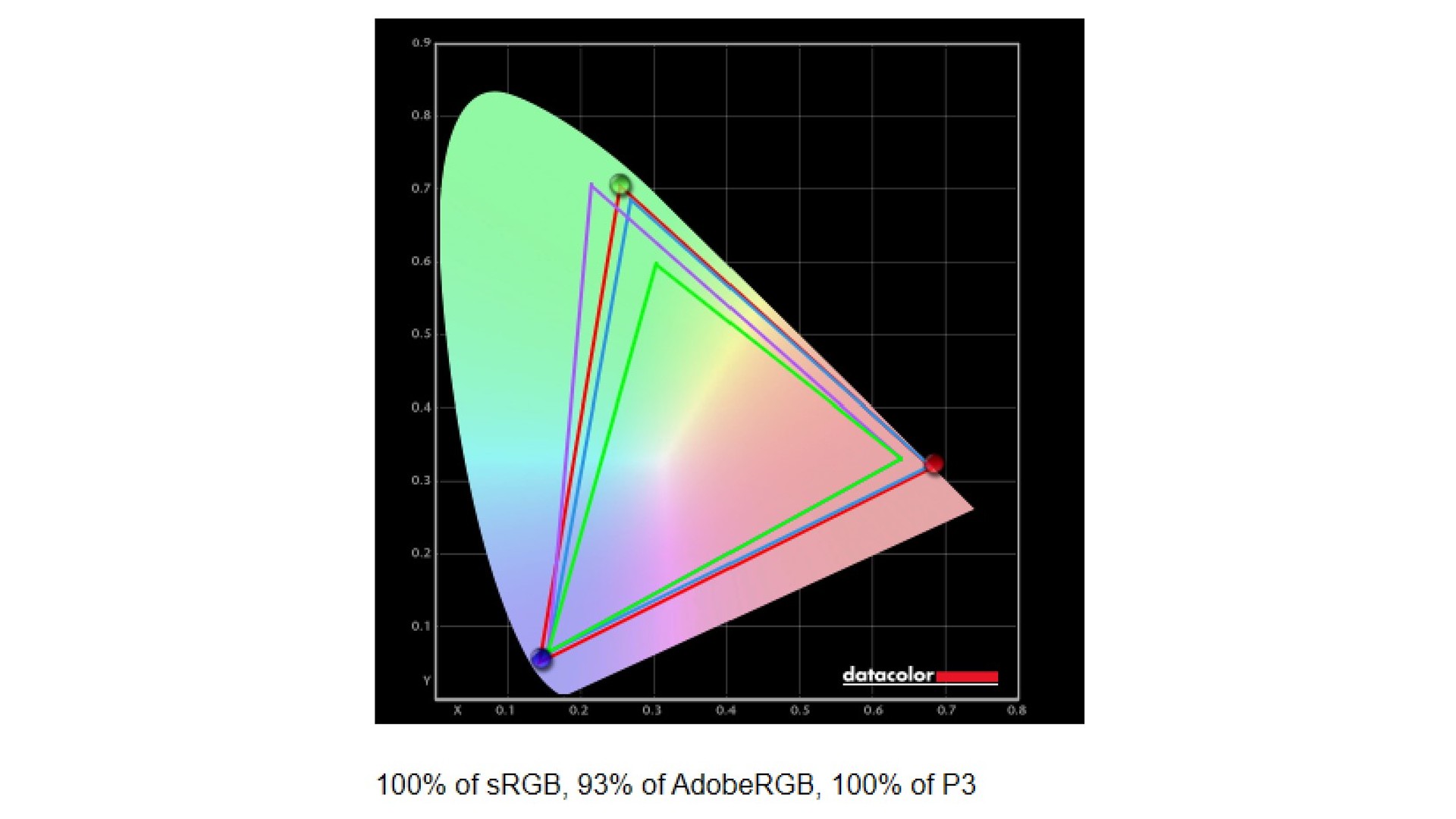
| Setting | Brightness | Black | Contrast | White point |
|---|---|---|---|---|
| 0% | 22.2 | 0 | 0:1 | 6,500 (0.312, 0.331) |
| 25% | 62.9 | 0 | 0:1 | 6,500 (0.313, 0.331) |
| 50% | 160.7 | 0 | 0:1 | 6,500 (0.313, 0.331) |
| 75% | 253.2 | 0 | 0:1 | 6,500 (0.312, 0.330) |
| 100% | 401.3 | 0 | 0:1 | 6,500 (0.312, 0.329) |
In tests, you'll notice that the display meets HP's promised 100% of the DCI-P3 color gamut and has astoundingly consistent white balance across brightness levels. This is one area where the OMEN Transcend 14 actually stands out among other laptops with this panel, as many tend to range slightly more between cool and warm hues (and a few even have a weird 0% brightness bug, like the Zephyrus G14).
However, for regular usage, I still prefer the ASUS ROG Zephyrus G14. ASUS' version of the panel is the first to feature NVIDIA G-Sync adaptive sync, for example, and also boasts Dolby Vision support alongside its VESA DisplayHDR True Black 500 rating. Beyond that, it genuinely looks more vibrant, is more color accurate, and feels more responsive and smoother across the board. These are tiny advantages, but they exist.
OMEN Transcend 14: Performance and thermals
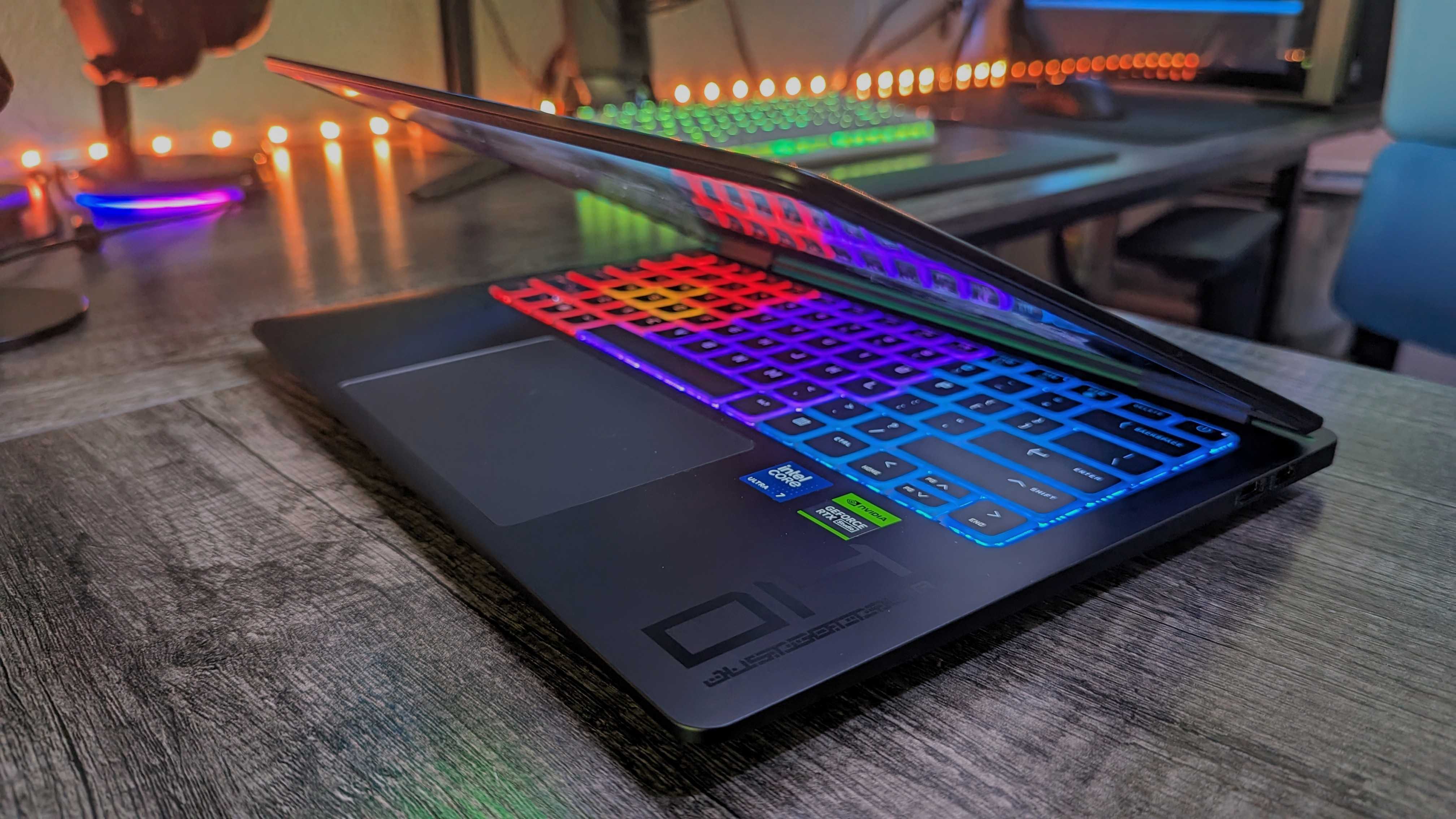
Performance highlights
- In CPU-focused productivity tasks, the HP OMEN Transcend 14 tests really well and has excellent overall thermal management.
- However, in real-world usage the Transcend 14 feels slower to open apps, worse at multitasking, and more prone to small stutters and hangs than the Zephyrus G14.
- In GPU-focused tasks, the Transcend 14 is significantly worse than other devices in the same category.
- Performance rating: ⭐⭐⭐
• CPU: Intel Core Ultra 7 155H (up to 4.8GHz, 16 cores, 22 threads) / Intel Core Ultra 9 185H (up to 5.1GHz, 16 cores, 22 threads)
• GPU: NVIDIA GeForce RTX 4050 (6GB GDDR6 VRAM) / NVIDIA GeForce RTX 4060 (8GB GDDR6 VRAM) / NVIDIA GeForce RTX 4070 (8GB GDDR6 VRAM)
• RAM: Up to 32GB LPDDR5X @ 7,467MHz
• Storage: Up to 2TB M.2 NVMe PCIe Gen 4.0 SSD
• Other features: Rear ventilation, Intel Dual Channel Flow, DirectX Cross Adapter Scan-Out (CASO)
In many ways, the HP OMEN Transcend 14 is a strong performer. The combination of Intel Core Ultra and NVIDIA GeForce RTX is bound to be capable in any configuration, but the Transcend 14 falls short in enough ways to warrant criticism in this department. It feels more like a creator-focused Ultrabook than a gaming laptop, except its real-world usage often doesn't reflect its benchmark scores.
The OMEN Transcend 14 can be configured with up to a Core Ultra 9 185H and a GeForce RTX 4070, but any configuration you get will be restricted by the laptop's max Thermal Design Power, or TDP. The advantage of having USB Type-C charging comes with the disadvantage of being limited to 140W, meaning HP lowered the wattage of the Transcend 14's components (namely its GPU, capped at 65W versus 90W in the Zephyrus G14) in the name of efficiency.
The result? The OMEN Transcend 14 performs well in CPU-focused productivity benchmarks, but falls short versus the competition in GPU-focused tasks and gaming.
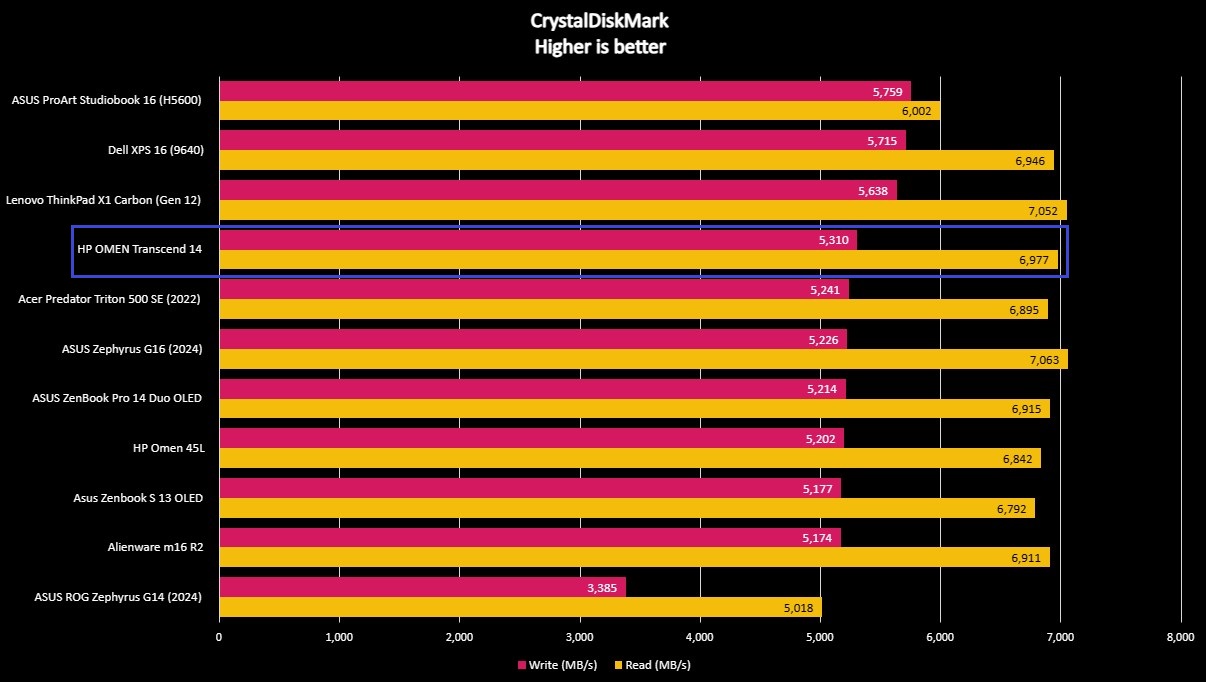
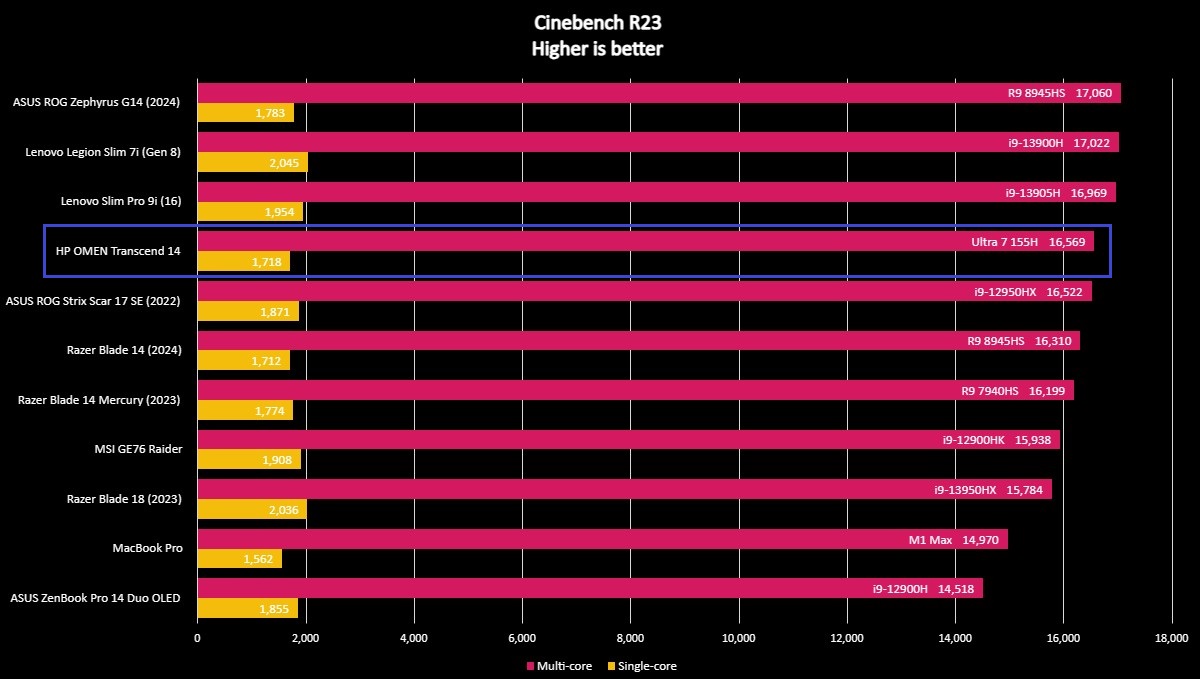
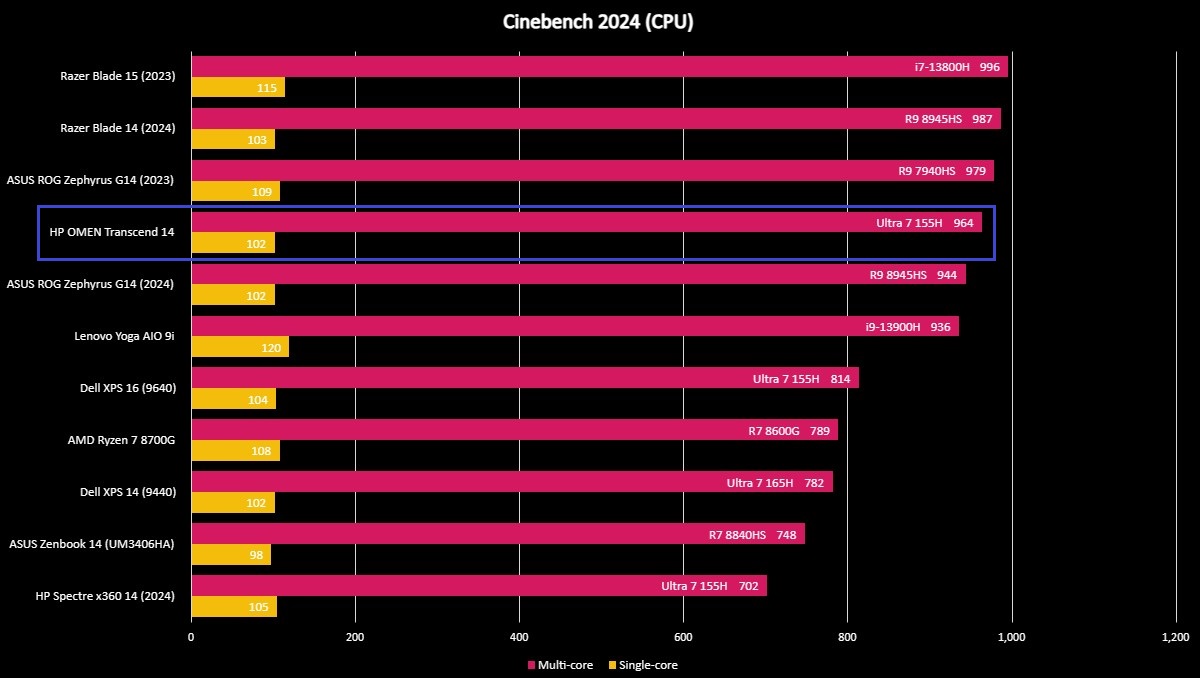
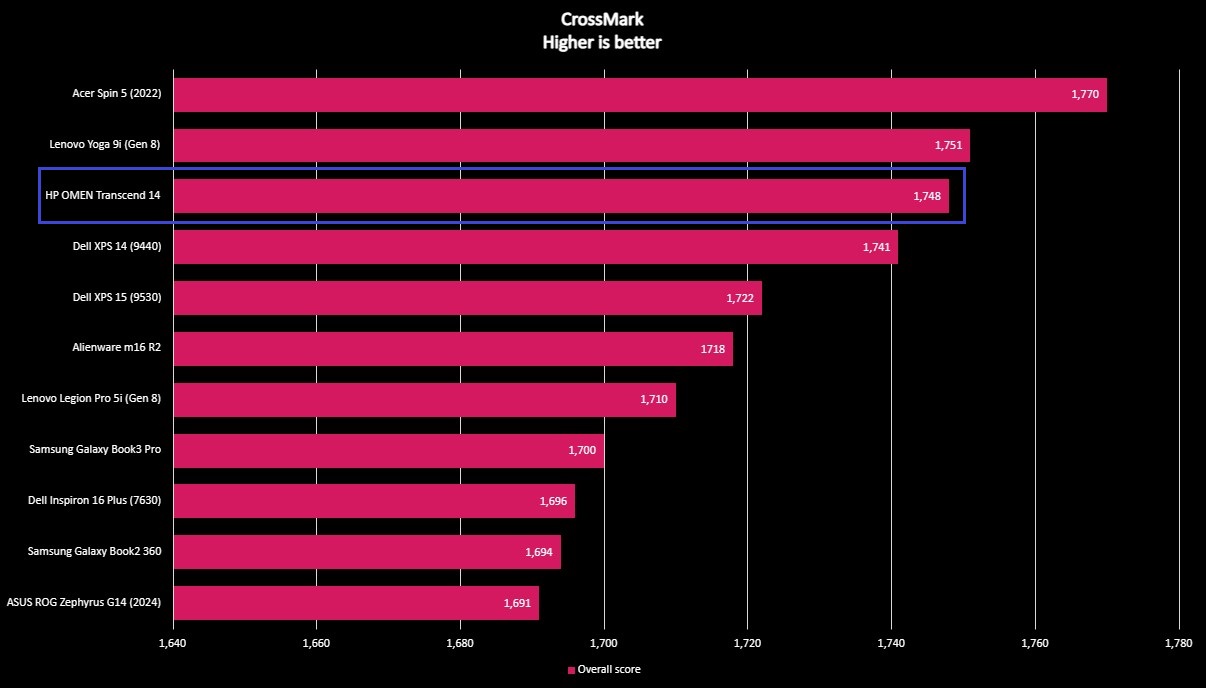
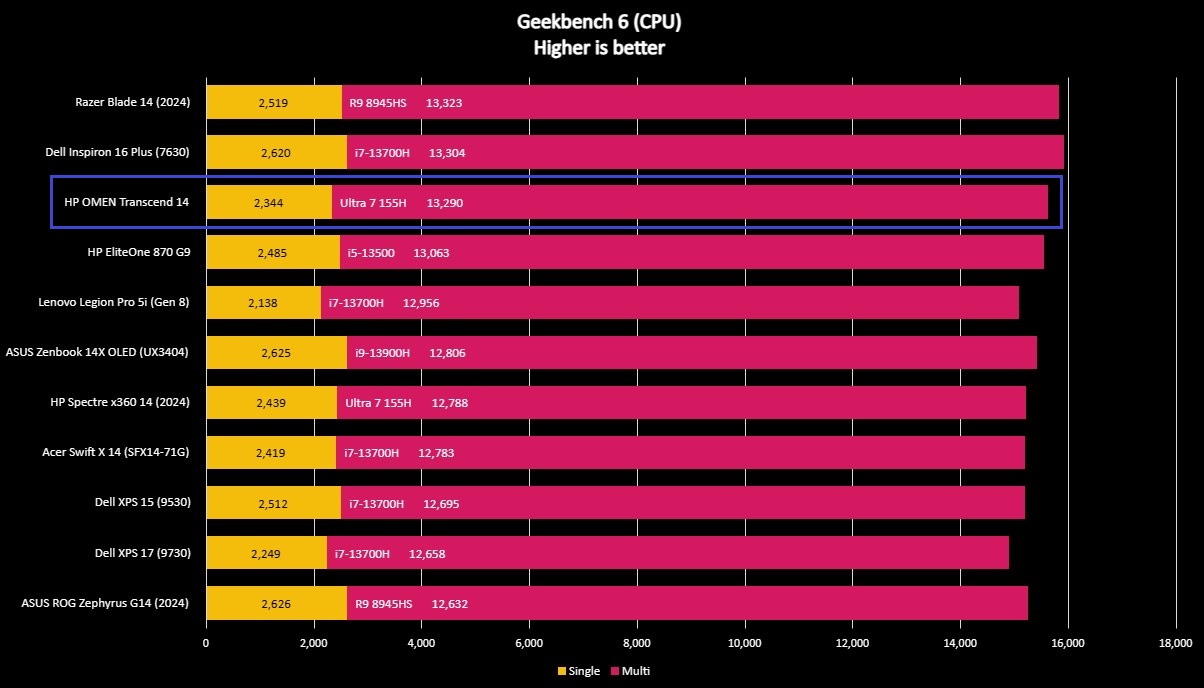
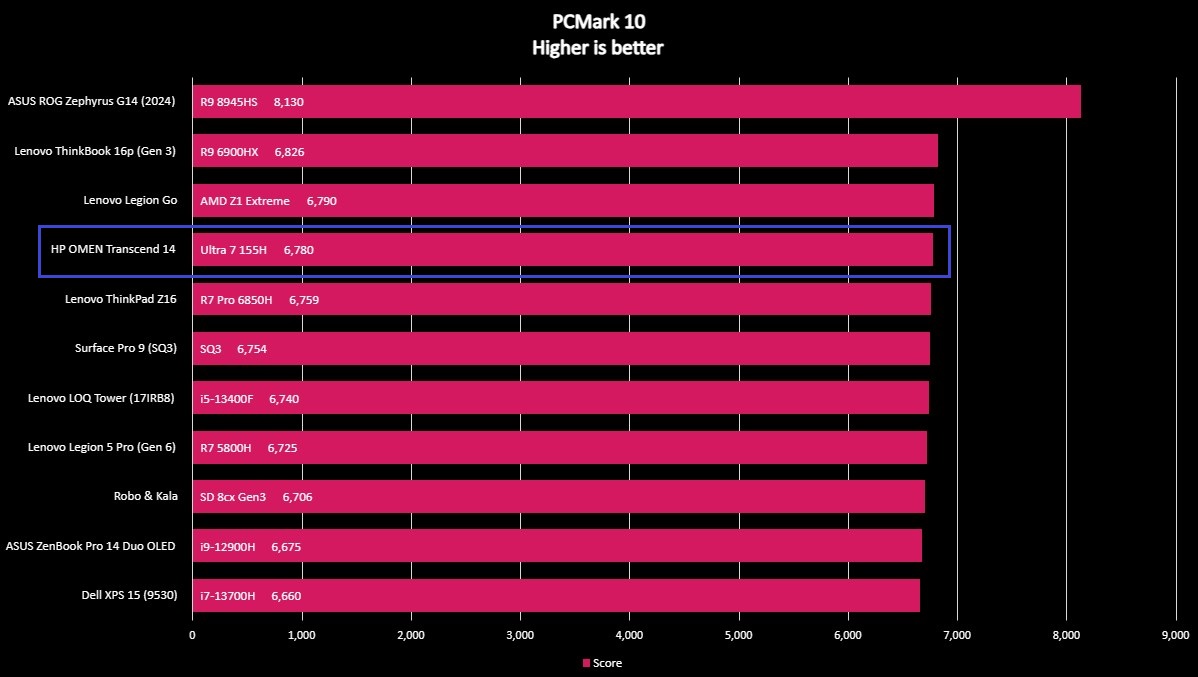
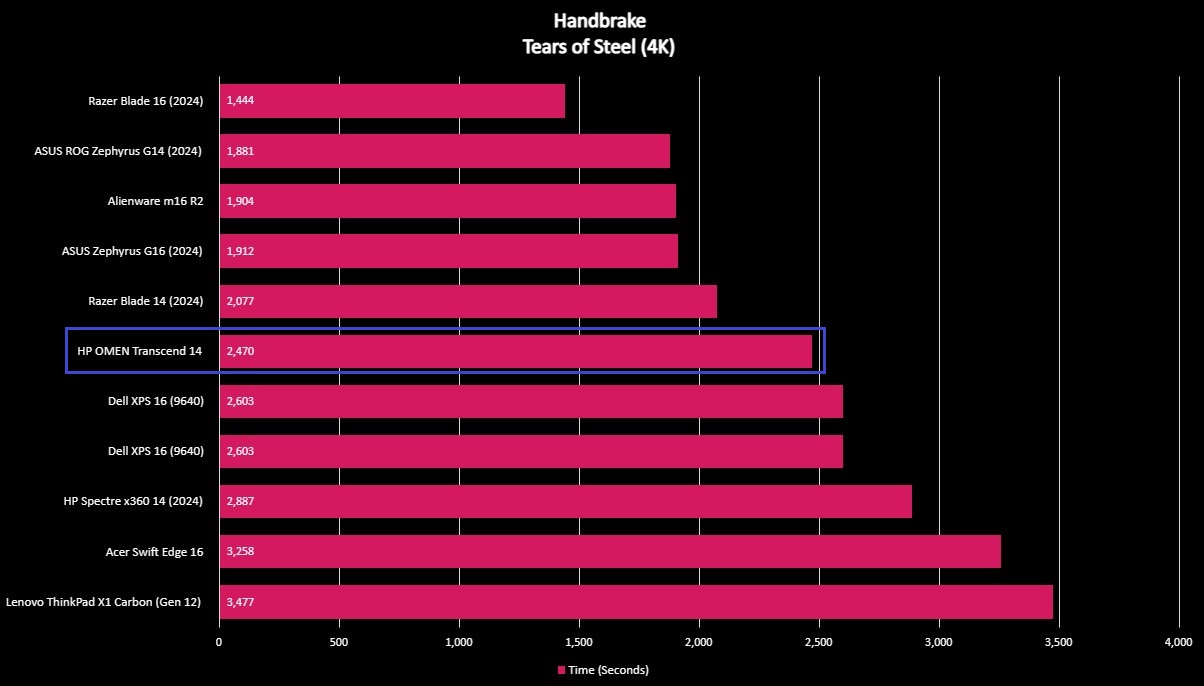
As you can see in the benchmarks above, the HP OMEN Transcend 14 actually test impressively well in multiple CPU-centric benchmarks, beating the ASUS ROG Zephyrus G14 and its (on paper) more powerful CPU. Predictably, it in turn struggles to keep up when pitted against the Zephyrus G14's RTX 4060, which is getting a lot more juice fed into it.
While the OMEN Transcend excels in CPU-focused benchmarks, though, its real-world performance leaves a lot to be desired compared to the Zephyrus G14. It's slower to wake up, slower to sign you in, slower to open apps, and more likely to lag or stutter when multitasking, moving between browser tabs, and performing various actions. I want to be clear — this laptop isn't slow. The hardware is far too good for that. But it does feel slower than it should at this price, and slower than the Zephyrus G14 at the same price. That's not good.
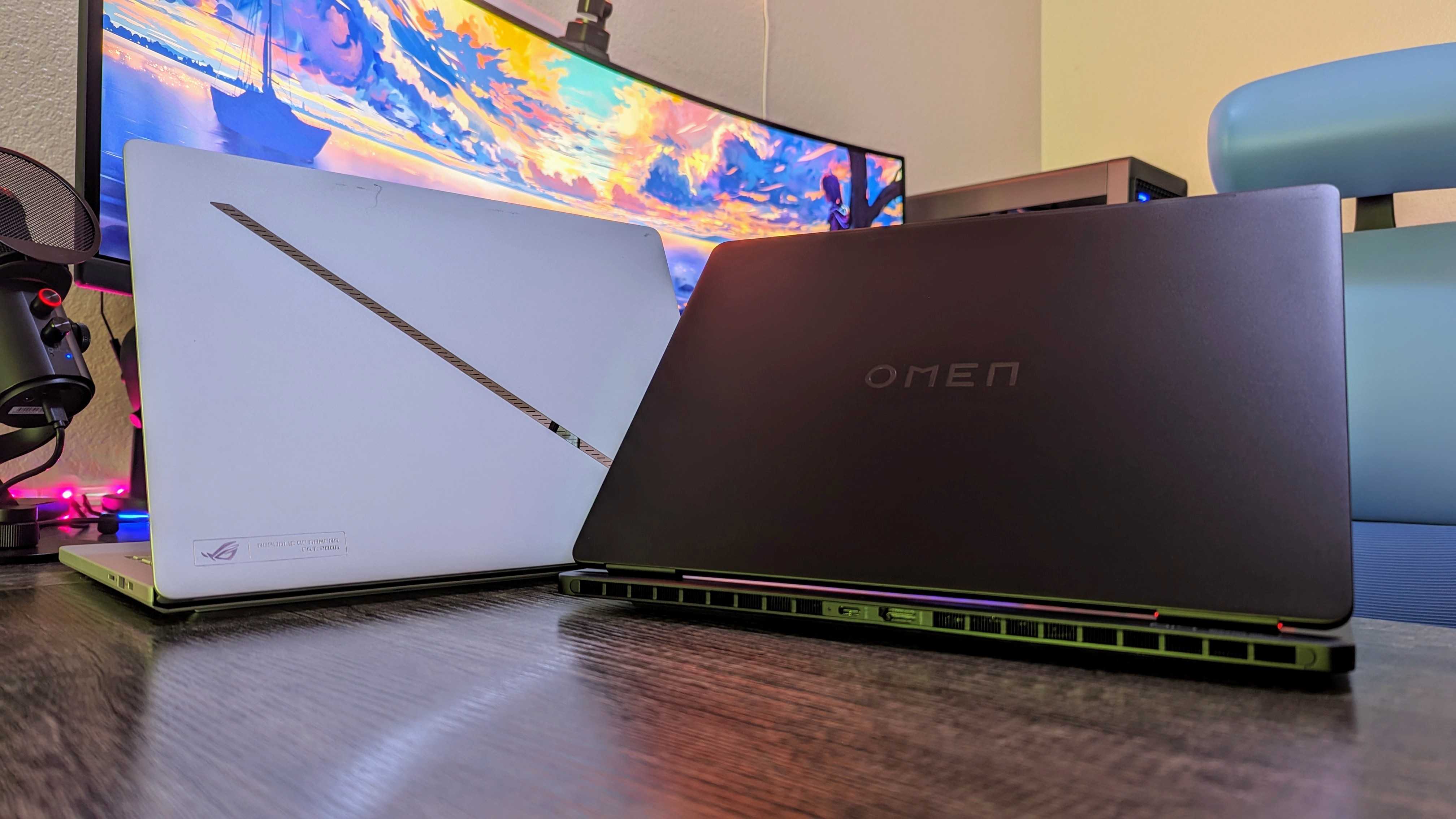
One area where I can praise the OMEN Transcend 14 is with thermal management. While these dual fans do get very loud (a little louder than I'd like), it's a low and warm sound versus a high-pitched whine. On top of that, this laptop never got hot to the touch, no matter how much I pushed it, and it resisted thermal throttling with surprising adeptness.
Running 40 loops of 3DMark's Time Spy, the OMEN Transcend 14 managed a frame rate stability (the difference between the best and worst performing loops) of 98.9%. I expect a frame rate dip of 2-3% for most laptops, and the ROG Zephyrus G14 (with its biggest flaw being running hot) experienced thermal throttling after just 25 loops. Overall performance isn't as good as the competition, but at least your laptop will never run hot.
OMEN Transcend 14: Gaming performance
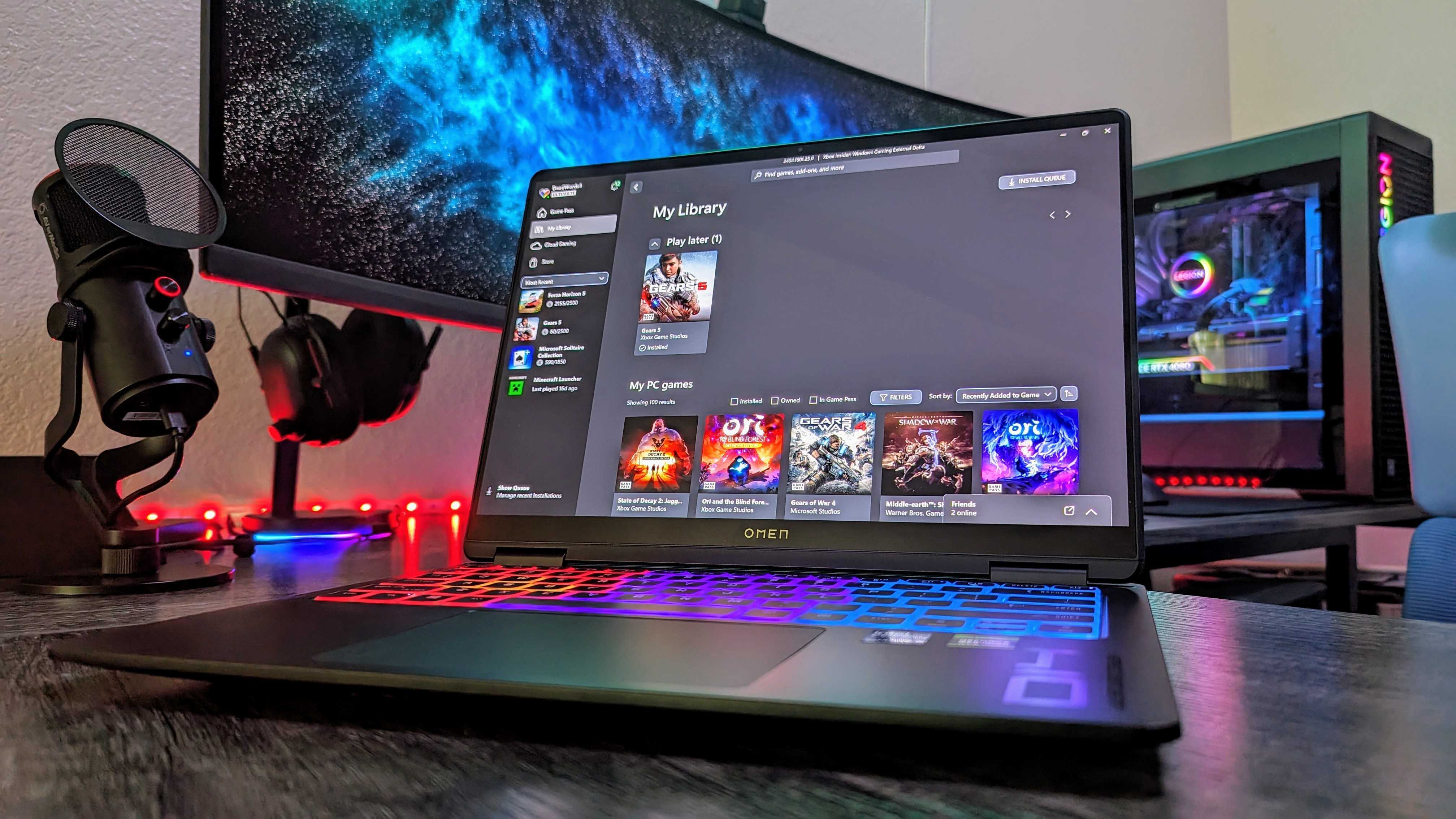
Gaming highlights
- Gaming is the HP OMEN Transcend 14's biggest weakness, an unfortunate situation for a marketed gaming laptop.
- Compared to the similarly priced ROG Zephyrus G14 (which itself isn't the most powerful in the segment), the OMEN Transcend 14 consistently performed worse, even at lower resolutions.
- In games where the OMEN Transcend hit similar frame rates, like Gears 5, performance was still less stable and more prone to fluctuation.
The HP OMEN Transcend 14 is marketed as a gaming laptop, and it does game better than some creator-focused Ultrabooks like the Dell XPS 16 (9640). However, HP seems to have gone much further in the same direction ASUS took the latest Zephyrus G14, meaning sacrificing some top-end performance in favor of portability and efficiency. Unfortunately, HP goes too far in that direction without gaining any meaningful advantages.
Consistently, in both benchmarks and real-world usage, the OMEN Transcend 14 is considerably slower graphically than the Zephyrus G14 with the same GPU, without actually being more compact, lighter, or longer lasting. The biggest reason behind this is the ROG Zephyrus G14 runs its RTX 4060 GPU at up to 90W, while the OMEN Transcend 14's 4060 is limited to 65W.
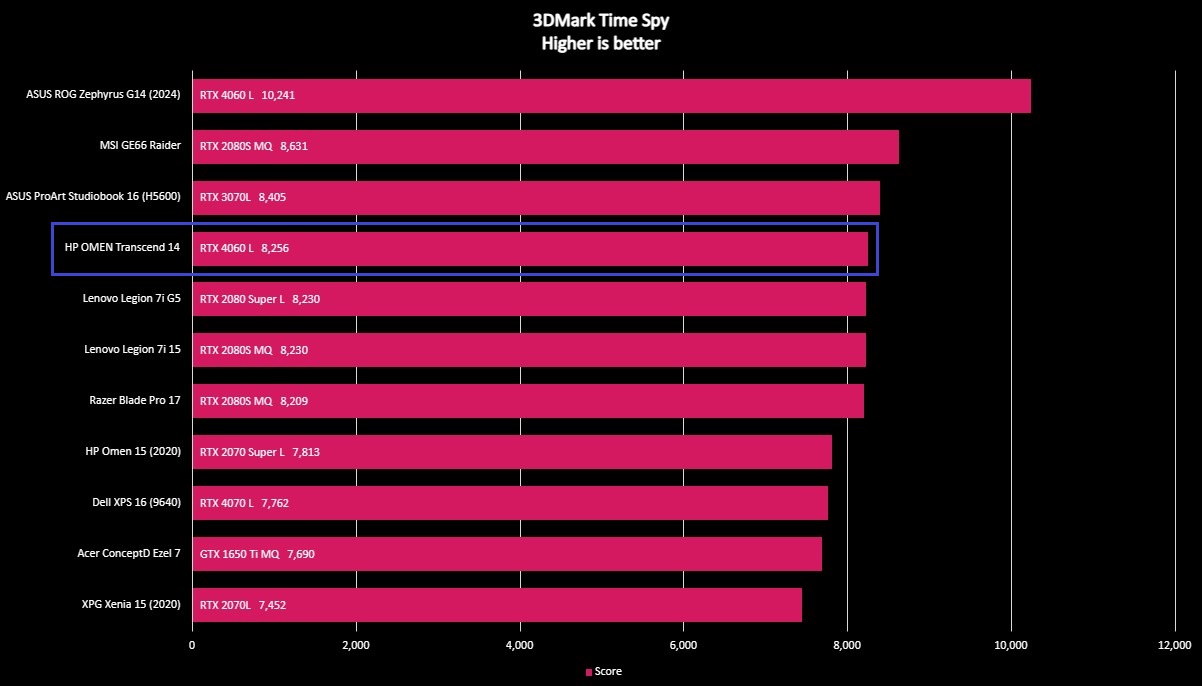
I'll let the numbers do the talking, though, because of course I gamed on the OMEN Transcend 14. I'll post the results from several games below, then talk briefly on how it compares to similar tests done on ASUS' ROG Zephyrus G14.
- Forza Horizon 5 — 61 FPS average (Extreme graphics preset, QHD+ 1600p resolution, 120Hz refresh rate, v-sync enabled, AMD FidelityFX Super Resolution 2.2 / Intel XeSS disabled)
- Gears 5 — 64 FPS average (Recommended/Ultra graphics preset, 2.8K 1800p resolution, uncapped framerate, v-sync enabled)
- Cyberpunk 2077 — 40 FPS average (Ultra graphics preset, QHD+ 1600p resolution, 120Hz refresh rate, v-sync enabled, AMD FidelityFX Super Resolution 2.1 set to "Quality," NVIDIA Reflex Low Latency enabled)
- Counter-Strike 2 — 80-115 FPS average (High graphics preset, QHD+ 1600p resolution, 120Hz refresh rate, v-sync enabled, AMD FidelityFX Super Resolution disabled, NVIDIA Reflex Low Latency enabled)
In Forza Horizon 5, a famously well optimized game that can run on a huge variety of hardware, dropped 16 frames-per-second on average versus the ASUS ROG Zephyrus G14 running the same settings at a higher (1800p) resolution. That's a huge discrepancy that was immediately noticeable, and no matter what I changed or how many times I repeated the test, the results were the same — the OMEN Transcend 14 fell short.
In Gears 5, the OMEN Transcend 14 kept up better with the same settings and the same average frame rate, but performance overall was unstable and inconsistent in comparison. In Cyberpunk 2077, I set the options the same on both systems, but had to lower the resolution on the OMEN Transcend 14 (1600p versus 1800p) just to get a lower average frame rate (40 FPS versus 41 FPS) with more instability and stuttering. At 1800p, the OMEN Transcend 14 struggled even to hit 30 FPS.
Finally, Counter-Strike 2 ran well on the OMEN Transcend 14 overall, but the frame rate swung wildly back and forth between ~75-80 and ~100-115 FPS at 1600p, while the Zephyrus G14 pretty consistently stayed above 100 FPS at 1800p. From game to game, preset to preset, the HP OMEN Transcend 14 kept to its pattern of lower frame rates and stability when gaming.
OMEN Transcend 14: Battery experience
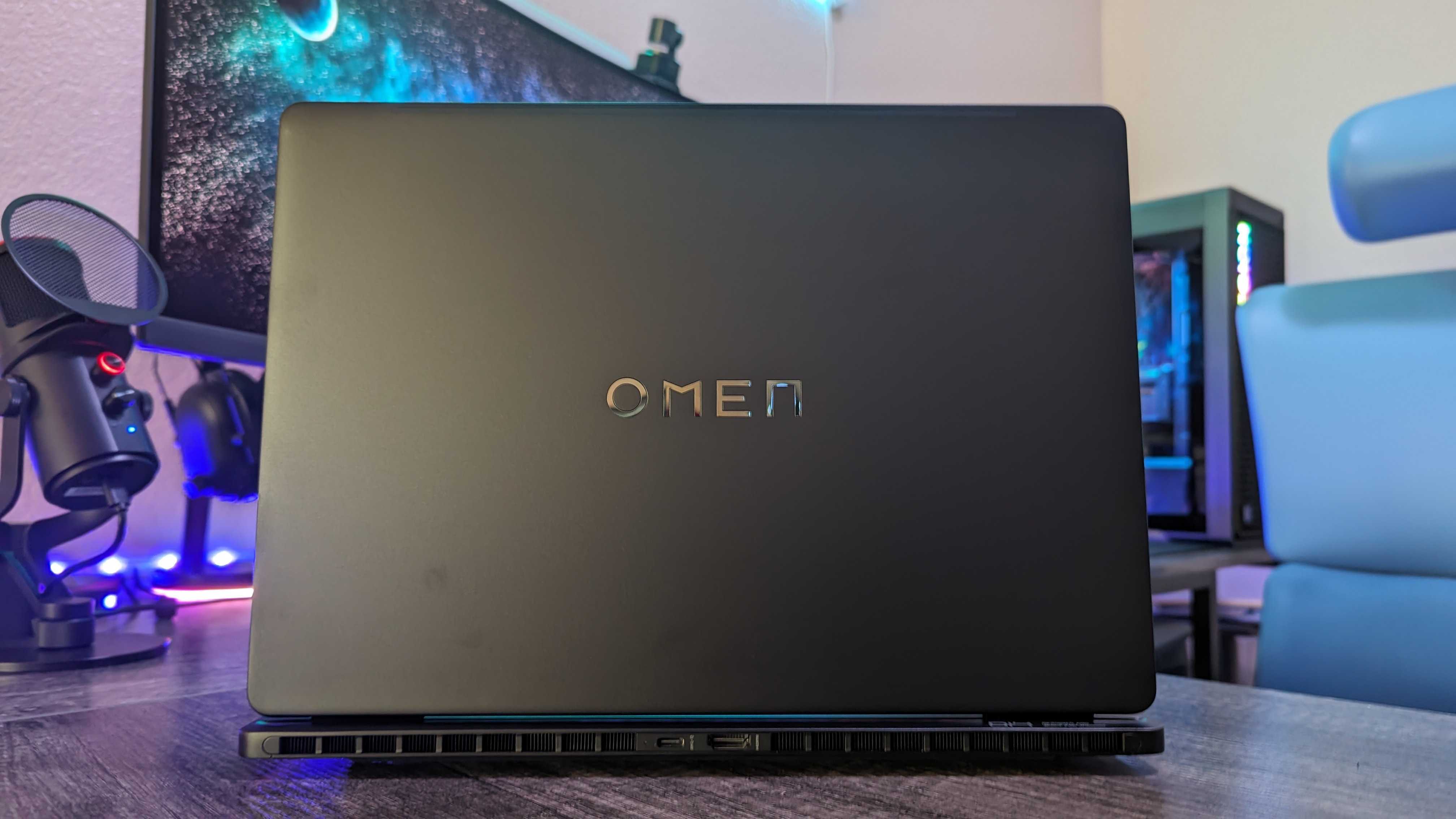
Battery highlights
- The biggest reason to opt for a lower wattage / lower performance design is efficiency, with HP making bold claims regarding the Transcend 14.
- However, even after a BIOS update significantly improving battery life, the OMEN Transcend 14's greatest weakness is inconsistency.
- Under similar loads and with similar settings, this laptop's endurance can vary wildly in a similar vein to its performance.
- Battery rating: ⭐⭐⭐½
One area where I had high hopes for the HP OMEN Transcend 14 is battery life. A lower wattage TDP with 140W USB Type-C fast charging and marketing clearly aimed at students and creatives, I thought the OMEN Transcend 14 would at least impress with its endurance. Unfortunately, it only occasionally does that. At least you don't need to lug around a proprietary charger if you want to get some gaming done.
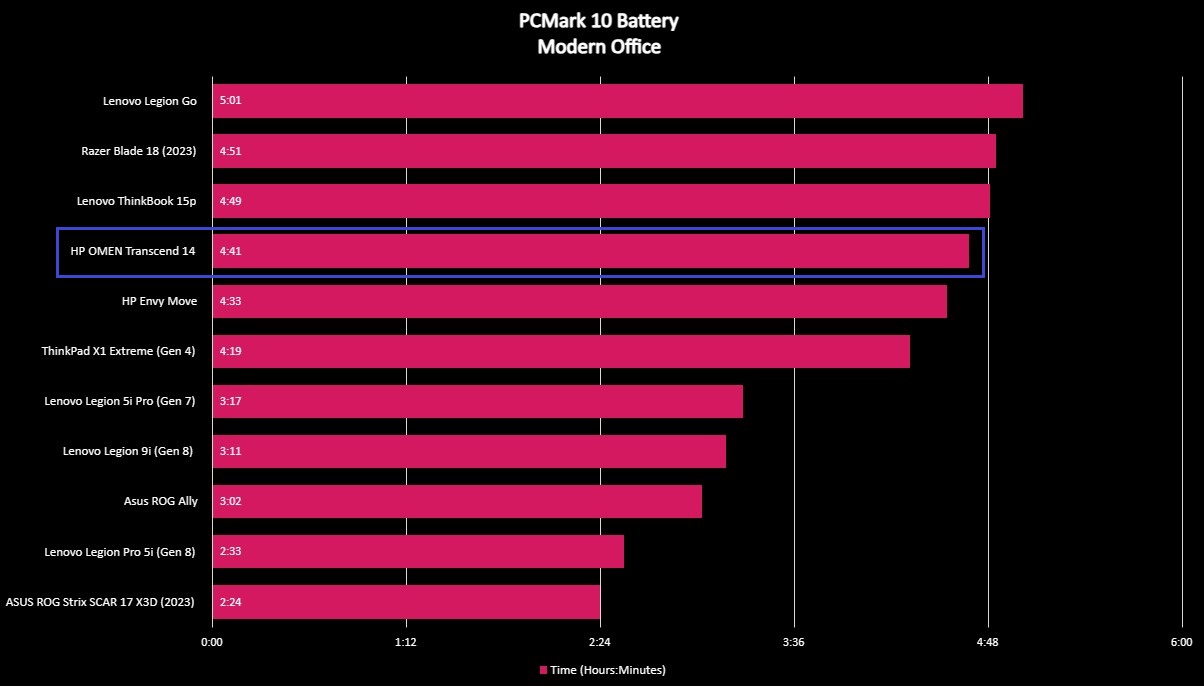
In PCMark 10's battery test, the HP OMEN Transcend 14 clocked out after 4 hours and 41 minutes, which is far from the worst I've seen but isn't as good as I expected. I also ran a Windows Battery Report, and it returned what I had observed myself. Sometimes, the OMEN Transcend 14 can last 5-6 solid hours on a charge — but that's often when its off-charger performance suffers the most.
Other times, I struggled to see a few hours of usage. Average it out, and at first glance the OMEN Transcend 14 seems to have similar endurance to the Zephyrus G14, but again my biggest issue here is consistency. I could always rely on the Zephyrus G14 to last at least 3 and a half hours of real, screen-on usage, while the OMEN Transcend 14 might give that or it might die in half the time... Or it may last an hour or two longer, if I could deal with the stuttering.
In this case, I believe the issue lies with HP's optimization, given the general instability. As a disclaimer, all of my testing was done with the latest firmware and drivers, including a BIOS update that enabled a new option to improve battery life (and it did, a bit).
OMEN Transcend 14: Keyboard and touchpad
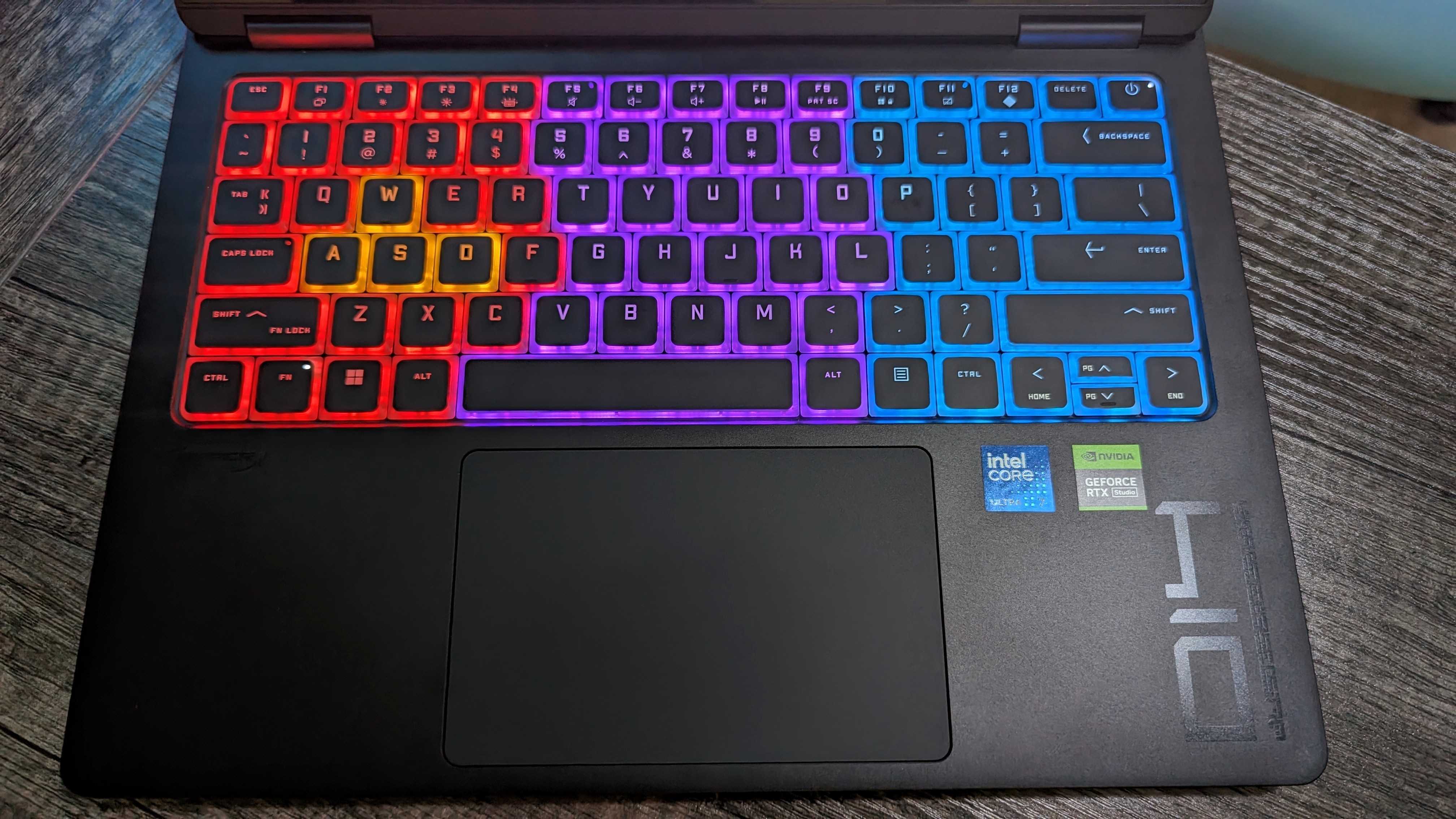
Keyboard highlights
- The HP OMEN Transcend 14's keyboard is very solid, but its unique design is bound to be divisive.
- The touchpad is also great, using Microsoft Precision drivers and giving you ample space.
- In both cases, though, the ASUS ROG Zephyrus G14 continues to be just a bit better.
- Keyboard rating: ⭐⭐⭐⭐
The keyboard may be the first thing you notice on the HP OMEN Transcend 14, but both its design and RGB lighting are just fine; some people will like it, some will hate it, but overall it's fine. Having to pay extra for per-key RGB lighting is odd, though.
However, the keyboard itself is great! It doesn't quite hit the heights of HP's brilliant Spectre x360 14 keyboard, but I place it somewhere between the Razer Blade 16 (2024) and ASUS ROG Zephyrus G14 (2024) keyboards — more responsive and tactile than the former, but less comfortable and practical than the latter. It would've been nice to get some extra macro keys and the layout's a bit strange in places, but those are minor issues.
As for the touchpad, it's as good as we've come to expect from Windows laptops. Glass surface, spacious, and using Microsoft Precision drivers. It's reliable and responsive, but I do prefer the silky texture of the ROG Zephyrus G14's touchpad a little more. Plus, there's sadly no haptic touchpad here, but those are still uncommon among laptops.
OMEN Transcend 14: Everything else
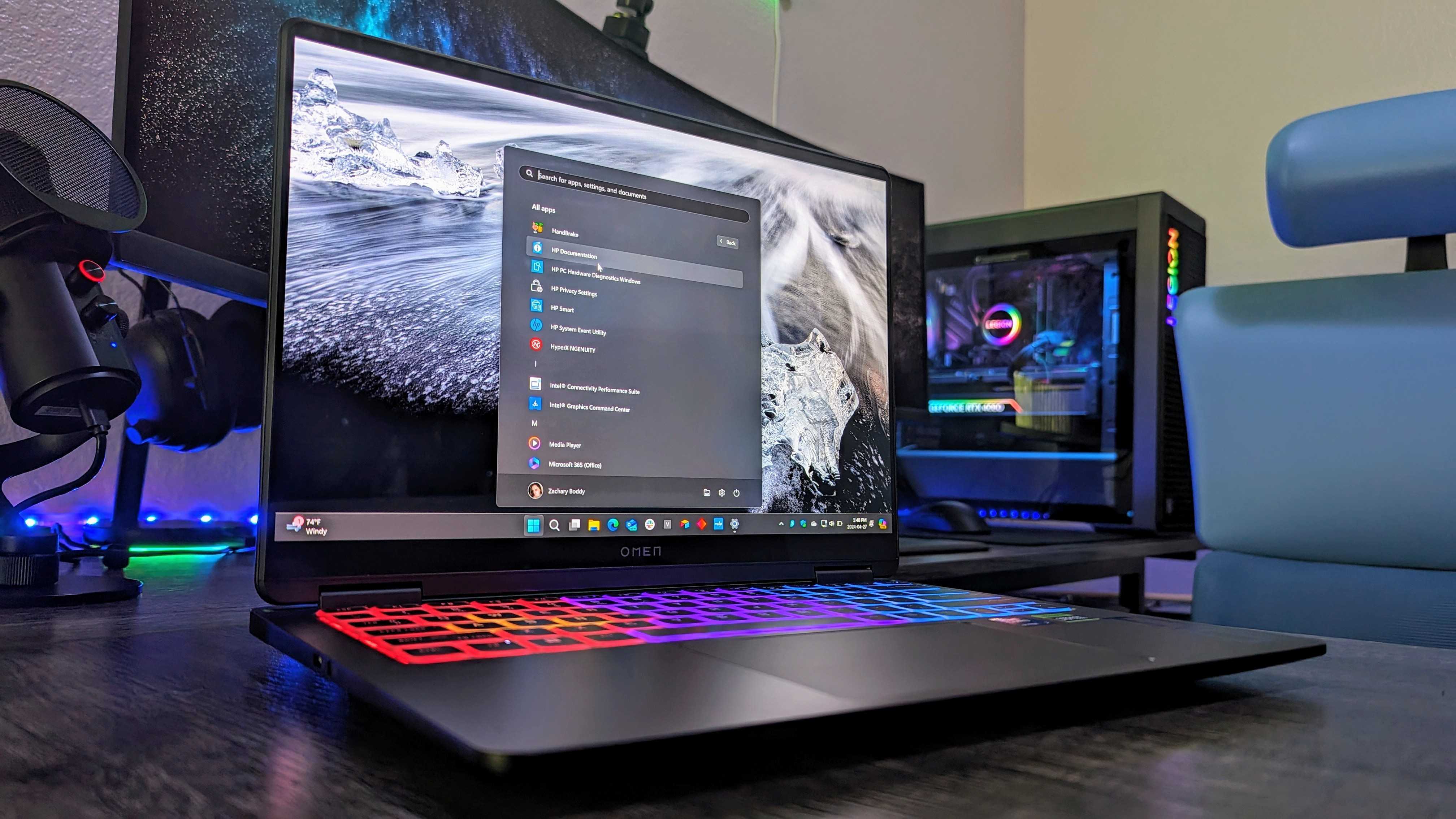
Other features highlights
- Wrapping everything up, the HP OMEN Transcend 14 is solid in practically every other category, with a few exceptions.
- There is a ton of software bloat, unfortunately, which seems to be common with HP laptops.
- On top of that, the audio experience is below average for a Windows laptop and wireless performance isn't always the best.
- Other features rating: ⭐⭐⭐½
• Camera & mic: FHD (1080p) front-facing webcam (IR sensor, Windows Hello facial recognition biometric authentication), dual-array digital microphones
• Audio: Dual-speaker HyperX speakers w/ DTS:X Ultra
• Wireless: Wi-Fi 6E 2x2, Bluetooth 5.3 / Wi-Fi 7 2x2, Bluetooth 5.4
• Other features: HP OMEN Gaming Hub, RGB lighting zones, integrated HyperX wireless receiver
Running through everything else, let's start with software. Unfortunately, the HP OMEN Transcend 14 suffers where other HP laptops do — its Windows 11 is filled with bloatware. 21 preinstalled apps and programs, several being buried hyperlinks and many others being a fragmented assortment of HP apps that definitely do not all need to be separate. The OMEN Gaming Hub also almost feels more like an advertisement than a proper game launcher.
Moving on, the OMEN Transcend 14 has an average webcam and mic array, but you do get Windows Hello facial recognition that isn't the most reliable compared to other recent laptops, but does work. There's solid wireless support with options for Wi-Fi 7 and Bluetooth 5.4, but Wi-Fi performance was simply not as good as other laptops I've used, including the ROG Zephyrus G14; stability is fine, but speeds are below average.
The audio is experience is also a mixed bag. The dual speakers are tuned by HyperX and sound fine for casual listening, but lack bass and separation, and quickly lose detail as you go up in volume. High volumes are far lower than the average for a good laptop, too, on top of sounding tinny. These speakers are mediocre, but at least you get the interesting added feature of an integrated HyperX wireless receiver. That means you can connect wireless HyperX headsets without the need for a dongle; setup is easy, but the connection quality isn't great, with frequent stutters and interference.
OMEN Transcend 14: Competition
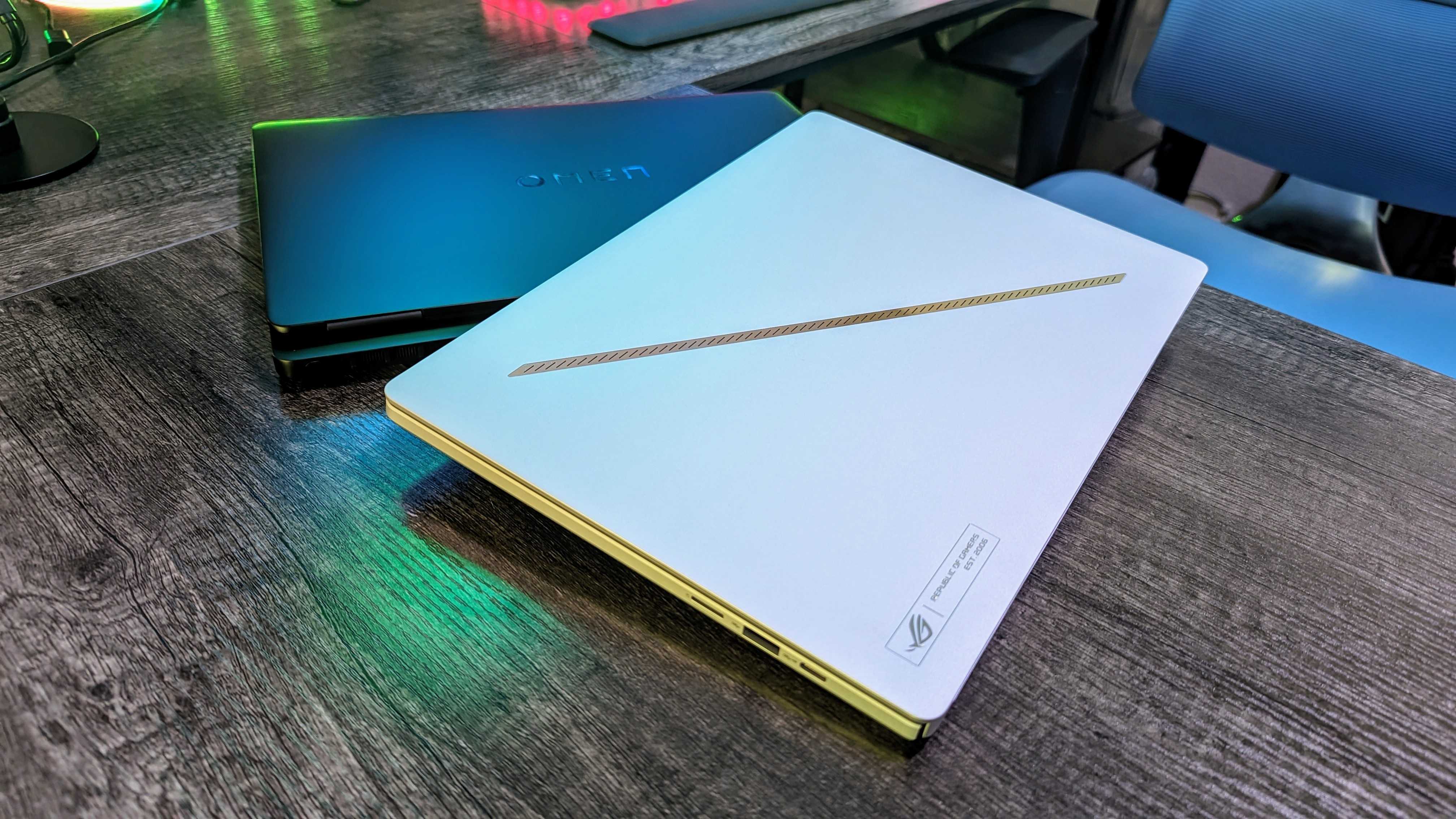
It probably won't surprise you to hear at this point, but if the HP OMEN Transcend 14 and ASUS ROG Zephyrus G14 (2024) are around the same price, buy the Zephyrus G14. In fact, you can pick up the configuration I reviewed (and compared the OMEN Transcend 14 to) for $1,599.99 at Best Buy.
- Recommended headset: HyperX Cloud III Wireless Gaming Headset for $149.99 at Best Buy
- Recommended mouse: HyperX Pulsefire Haste 2 Wireless Gaming Mouse for $89.99 at Best Buy
If the OMEN Transcend 14 is on sale, it can be an excellent option, however. Elsewhere, you can also consider the more premium Razer Blade 14 (2024), or the Dell XPS 14 (9440) if you'd rather trade graphical power for a more premium, compact design. Check out our list of the best gaming laptops for some other recommendations.
OMEN Transcend 14: Score card
| Attribute | Rating & notes |
|---|---|
| Value | 3.5/5 — Upgrades are very reasonably priced overall, but the best configuration for most people still retails for more than the equivalent (and more capable) ROG Zephyrus G14. |
| Design | 4/5 — This is a gorgeous, obviously premium laptop, but it's not the smallest or lightest in its class and some design elements are bound to be divisive. |
| Display | 4.5/5 — It's an excellent display just like we've seen in other laptops, but it's not quite as responsive, color accurate, or vibrant as the Zephyrus G14. |
| Performance | 3/5 — The OMEN Transcend 14 really isn't a slouch and is more than capable of playing most modern games, but it's simply not as powerful as the competition (and has some real-world sluggishness). |
| Battery | 3.5/5 — This laptop has the potential to last longer than expected, but its endurance is inconsistent and is never particularly greater than the competition. |
| Keyboard | 4/5 — A great keyboard (with a unique design) and a great touchpad... But not quite as good as the Zephyrus G14. |
| Other features | 3.5/5 — The OMEN Transcend 14 is average at best with the software experience, wireless performance, camera and audio, and more. The HyperX wireless receiver is a cool feature, though. |
| Overall | 3.5/5 — The HP OMEN Transcend 14 is an excellent laptop on paper and mostly delivers in person, but it struggles to compare to its closest competitor in the same price bracket. |
OMEN Transcend 14: Final thoughts
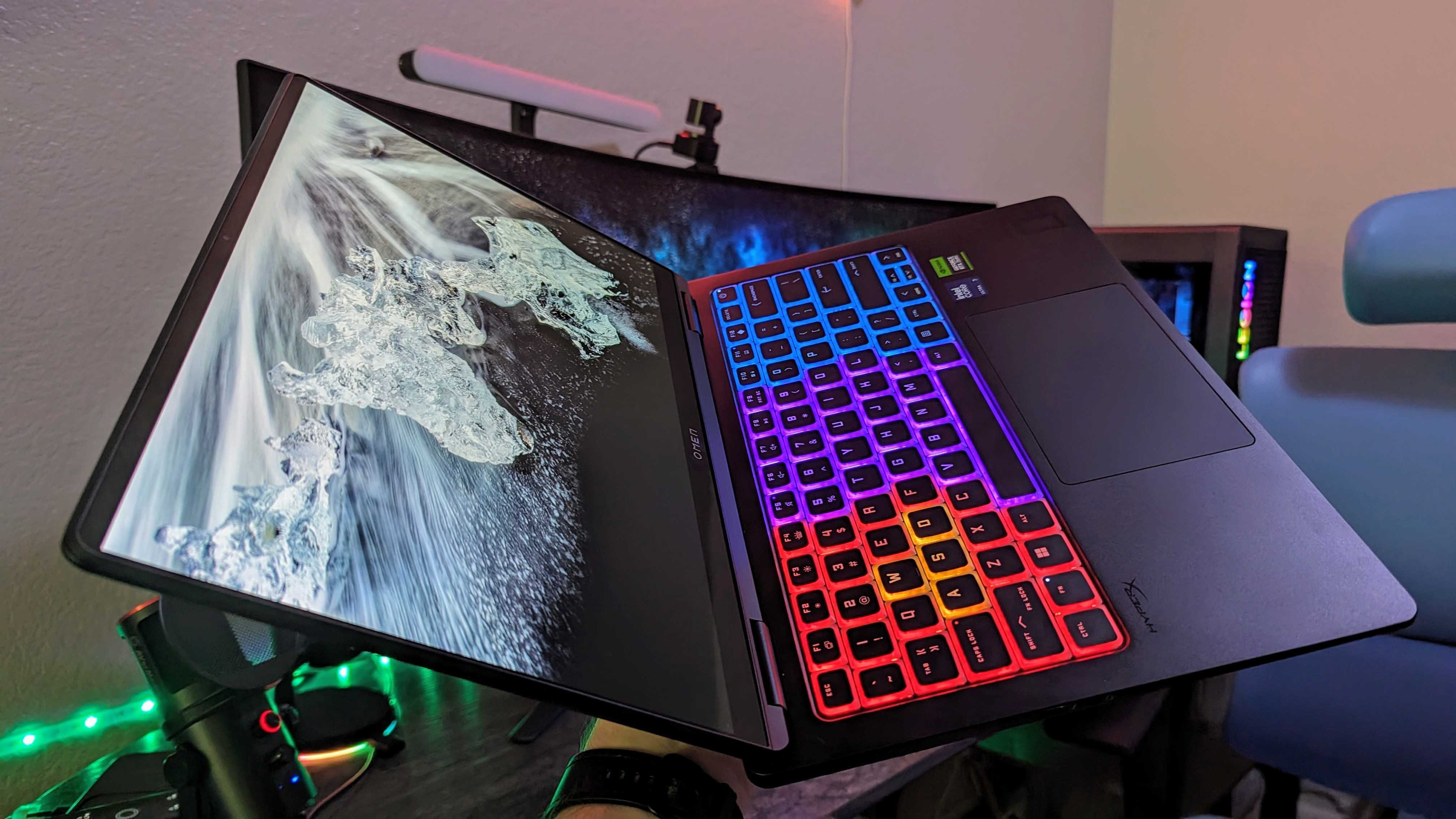
You should buy this if ...
✅You want a premium Windows laptop that can also game
Marketed as a gaming laptop, in reality the HP OMEN Transcend 14 is closer to a premium Windows Ultrabook that can also game, not a device with gaming as its primary focus. For many that value premium, compact design, though, that's not a bad thing.
✅You can find it on sale
At full retail price, it's difficult to recommend the HP OMEN Transcend 14 over its biggest competitor. If you can find it on sale for at least $2-300 less, though, it's far easier to recommend as a fantastic overall Windows laptop with solid gaming capabilities.
You should not buy this if ...
❌You can buy the ASUS ROG Zephyrus G14 (2024) for the same or similar price
I don't mean to sound like a broken record, but the main focal point of my time with the OMEN Transcend 14 is just how hard it was not to compare it to the Zephyrus G14, which is smaller in every dimension, lighter, more performant in day-to-day tasks, more powerful with gaming, and more refined in every sense from the display and design to the keyboard and speakers. For the same (or even lower) price, why wouldn't you choose the Zephyrus G14?
When I reviewed the Acer Swift X 14 (SFX14-71G), I found myself constantly comparing it to the ASUS Zenbook 14X OLED (UX3404) I reviewed before it, which managed to be better than the Acer in almost every single category while being around the same price. With the HP OMEN Transcend 14 and ASUS ROG Zephyrus G14 (2024), history is repeating itself — it's so hard to recommend HP's laptop for $1,699.99 at Best Buy when the equivalent Zephyrus G14 exists for $1,599.99 at Best Buy.
I want to be clear on two points, though. 1) The HP OMEN Transcend 14 is not a bad laptop. It has genuine flaws, but if I handed this laptop to random people on the street, 9/10 would absolutely love it. 2) Never buy a product for what it could be rather than what it is — That being said, the OMEN Transcend 14 does have the potential to improve its performance, battery life, and wireless performance with future firmware and driver updates.
If you're looking for a slim, compact 14-inch gaming laptop for $1,500-2,000, get the ASUS ROG Zephyrus G14. However, if the HP OMEN Transcend 14 is on sale for $2-300 less than ASUS' alternative, then it's a lot easier to forgive its weaknesses and recognize its very real greatness. I wanted to love the OMEN Transcend 14, and I still do, but given the choice, I'd never choose it over its biggest competitor.
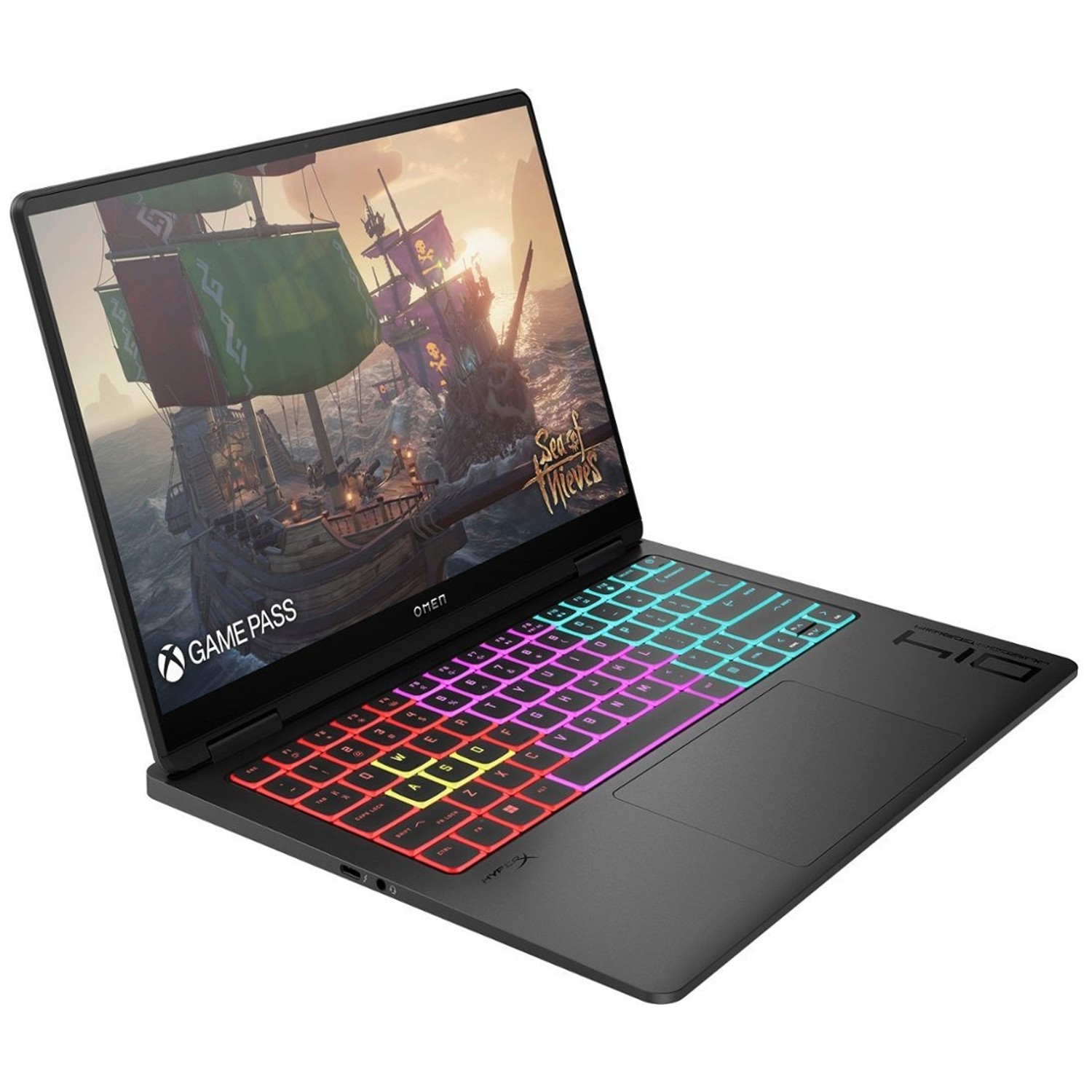
I was so excited to test the HP OMEN Transcend 14, and I can absolutely see the hints of greatness here. However, after extensive testing, it's just not priced well to go up against the ROG Zephyrus G14. With updates and a price cut, though, this could be an absolutely wonderful laptop for many people.

Zachary Boddy (They / Them) is a Staff Writer for Windows Central, primarily focused on covering the latest news in tech and gaming, the best Xbox and PC games, and the most interesting Windows and Xbox hardware. They have been gaming and writing for most of their life starting with the original Xbox, and started out as a freelancer for Windows Central and its sister sites in 2019. Now a full-fledged Staff Writer, Zachary has expanded from only writing about all things Minecraft to covering practically everything on which Windows Central is an expert, especially when it comes to Microsoft. You can find Zachary on Twitter @BoddyZachary.
